Inside Marufukuro
What it's like to stay overnight at the Old Nintendo Building

Ever since I was a kid playing NES, I've been fascinated by Nintendo's story. Growing up in Sweden in the '80s, one couldn't avoid being part of the cultural wave that Nintendo swept over the country.
The local Swedish Nintendo distributor, Bergsala, was a company known for importing hi-fi equipment. During one of their trips procuring new goods in Asia, Owe Bergsten and Lars Jarhamn (founders of the company) stumbled upon a Game & Watch in a store. They were mesmerised and played Fire on the plane ride home. With some luck and tenacity, Bergsala managed to secure the distribution rights for Game & Watch in Scandinavia.
Bergsala's hard work led to Game & Watch becoming a huge hit. They even hosted nationwide Swedish Game & Watch championships, and ran full-page ads in daily newspapers. Donkey Kong and Nintendo became a household name in Sweden. While the Game & Watch fad only lasted until 1983, Bergsala foresaw the huge potential of the Famicom, which was already making waves in Japan.
Sweden スウェーデン
Nintendo was reluctant to release the Famicom in the west after the crash of the U.S. video game market in 1983. Bergsala tried to convince Nintendo to change their stance (and almost got a PAL version of the Famicom), but in the end, it had to wait until the NES launched. Being one of the first European distributors to launch the new console, Bergsala relied on the brand awareness surrounding the Game & Watch.
Bergsala were good at growing the culture of Nintendo and their local marketing helped build a market that vastly outperformed other European territories when taking population size into consideration. Bergsala were early pioneers with a Nintendo Club that kicked off alongside the NES's launch in the autumn of 1986. With information about games being scarce at the time, the Nintendo Club letters (and later, small three-colour printed club pamphlets) were truly magical. They provided a gateway - a precious glimpse - into the world of Nintendo.
I especially remember one issue from 1989 that included an article about Nintendo being 100 years old (its true age has lately been contested). Also featured was a timeline highlighting the manufacturing of playing cards (including the Disney-licensed variety), the invention of the light gun, and other milestones. I found it unbelievable that a company dealing in cutting-edge video game technology was so old. This generation-spanning family business, run by the Yamauchi family, had an air of myth and tradition that only grew as I discovered more about it.
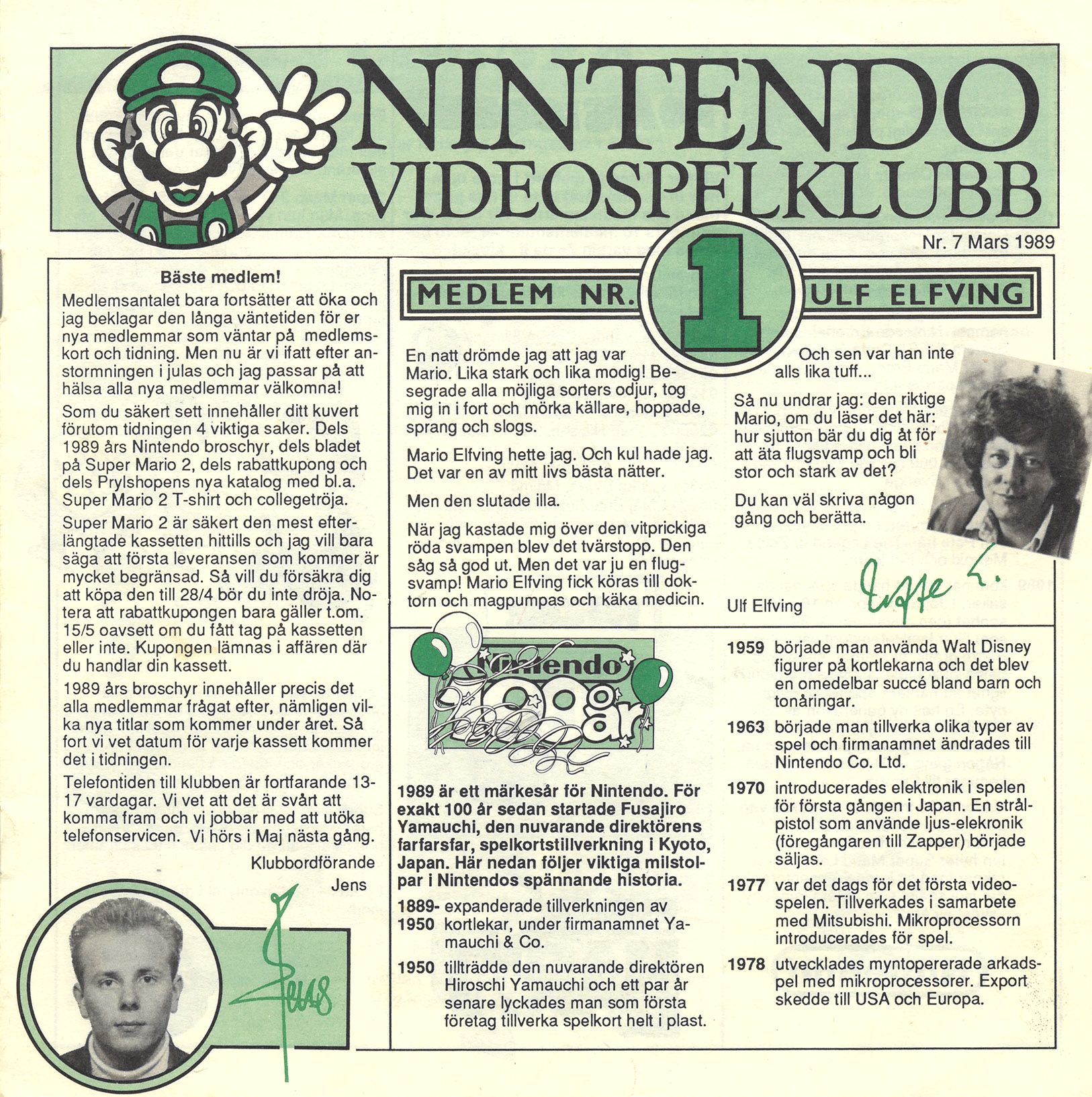
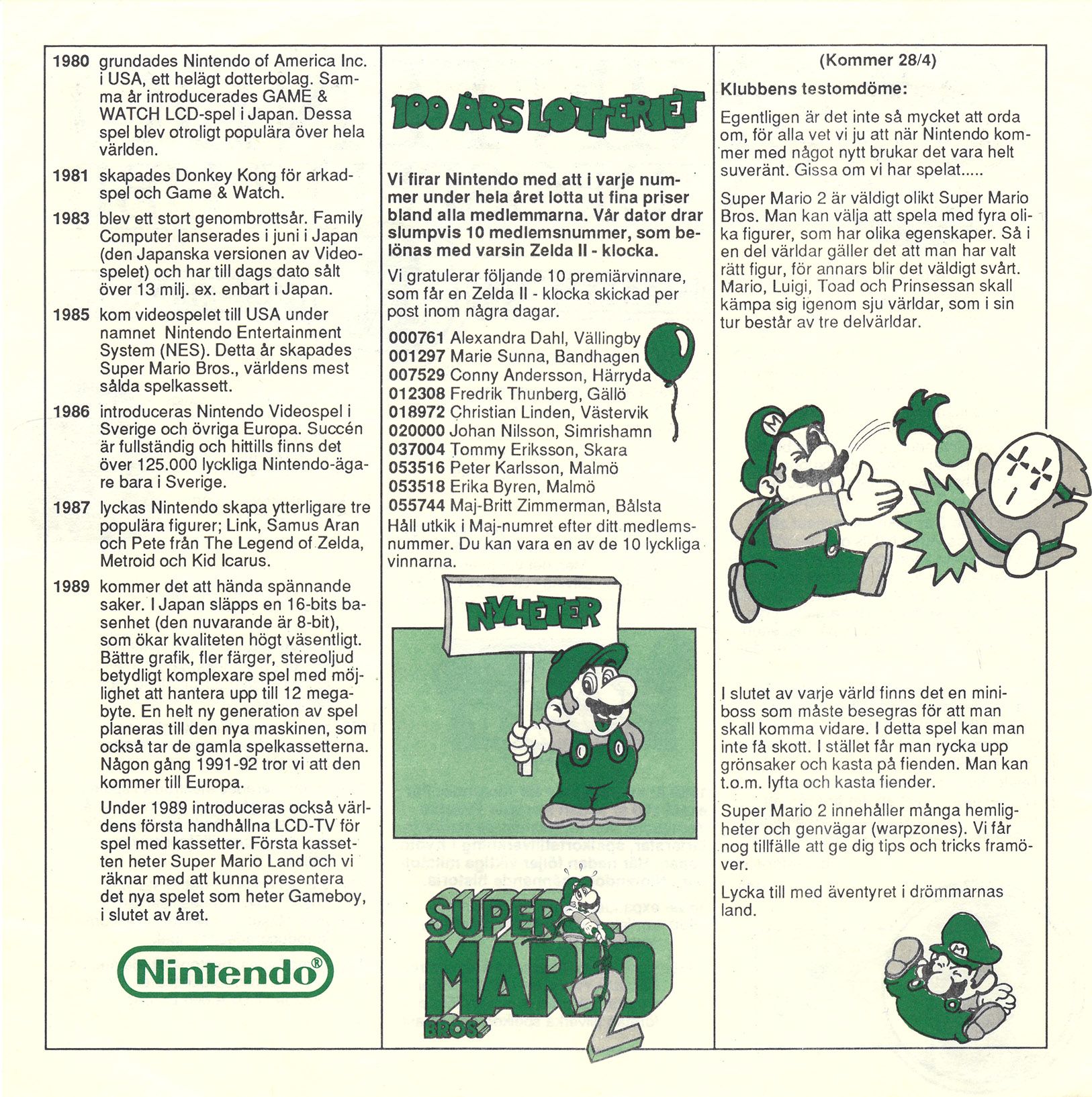
Source: Author.
Throughout the years I continued to read about the history of Nintendo, and even wrote a book in Swedish about how Bergsala discovered Nintendo and introduced it to Scandinavia. I never became an avid collector of Nintendo playing cards or toys, but I do own a couple of decks of hanafuda (one older, and a newer Mario-themed version), as well as a re-issue of the famous Love Tester machine. Delving into Nintendo's history led me to read Erik Voskuil's Before Mario book, and following Fabrice Heilig's remarkable project to build a full-size copy of the original Nintendo office in his backyard.
The original Nintendo office - or, more accurately, workshop - was torn down in 2004, so it's no longer possible to visit. But when the company first expanded, they built new premises on a lot next to the workshop. This resulted in the completion of a larger brick house in 1933 that still stands.
Nintendo 任天堂
Having had a career in the games industry since 1994, I eventually made it to Japan, visiting the Tokyo Game Show in 2010. A couple of years later, I went to Kyoto; of course, I had to do the Nintendo pilgrimage. In particular, I wanted to find Nintendo's various offices around the city. There are three main offices: (1) the current HQ that was erected in 2000, (2) the neighbouring R&D building that was built in 2011, (3) the lot from the mid '50s that had main HQ, a factory, and another building, where today only one building remains housing Club Mario, and finally, (4) the old main office from 1933.
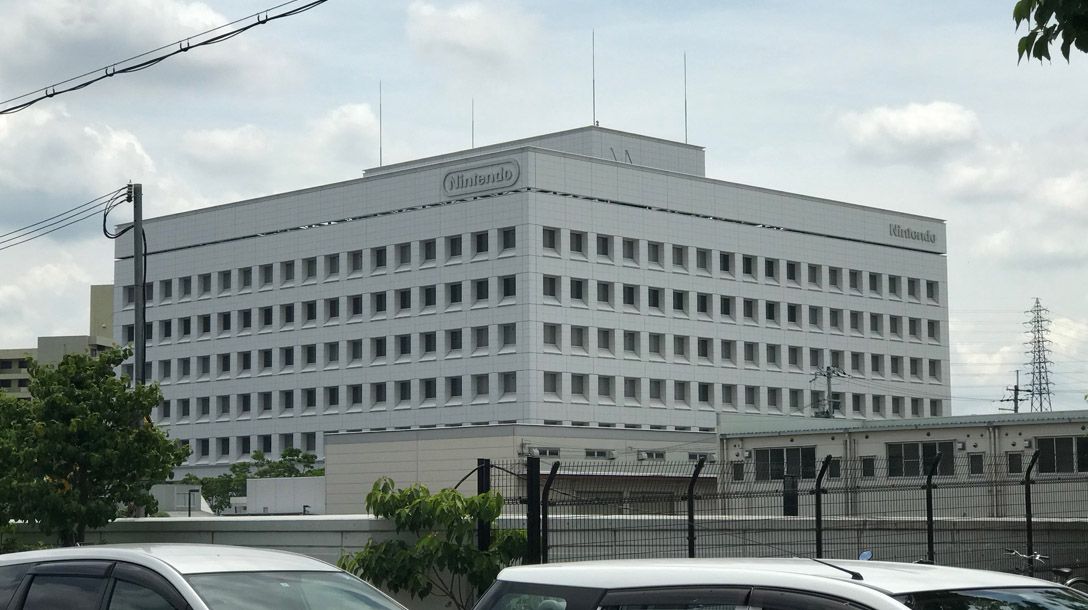



Top left: Current HQ built in 2000. Top right: R&D centre built in 2011. Bottom left: The 1950s lot that currently houses Club Mario. Bottom right: Old main office built in 1933. Source: Author.
The modern offices - those built from the '50s onwards - are anonymous white boxes. Even their interiors are sober affairs that don't betray the company's entertainment focus. The lobby in the current main office is made of white marble and is punctuated by just a couple of paintings hanging on the walls. There are no Mario statues, consoles, playing cards, or anything specifically denoting what the company does.
The old brick building from the '30s, though, is a charming art deco house with beautiful carved stone and prominent logos. The lot itself is long and narrow, and consists of three buildings. It is enveloped on all sides by residential buildings, and the nearby Kamo River. In the mornings, you'll see cranes landing on the fences and rooftops. It's quiet, too, with very few people walking the nearby streets. It's almost as if time has stood still. If you squint, you can imagine the young Nintendo boss, Hiroshi Yamauchi, dressed in a suit and puffing smoke into the air on his way to the office.
I have returned to the old '30s Nintendo headquarters several times. When I worked as a brand manager at the publisher Raw Fury and attended BitSummit in Kyoto, I took my colleagues on a walk to the old office. Just seeing it with your own eyes is something of a religious experience if you're into video games and Nintendo. For nearly a century, this elegant building has been owned by Nintendo - but visitors were strictly forbidden. We know that the entrance hall contained hanafuda framed on the wall, but the rest of the building remained a mystery.
Until now, that is.
In news that surprised just about everyone, the Yamauchi family announced that the old Nintendo office would be turned into a hotel. In April this year, the doors officially opened at Marufukuro, a name inspired by the original distribution company (Marufuku) that Nintendo used to sell playing cards. Since Japan was slowly starting to open up after the height of the pandemic (with business visas becoming available), I planned a trip to BitSummit in August, and booked a night at the new hotel.
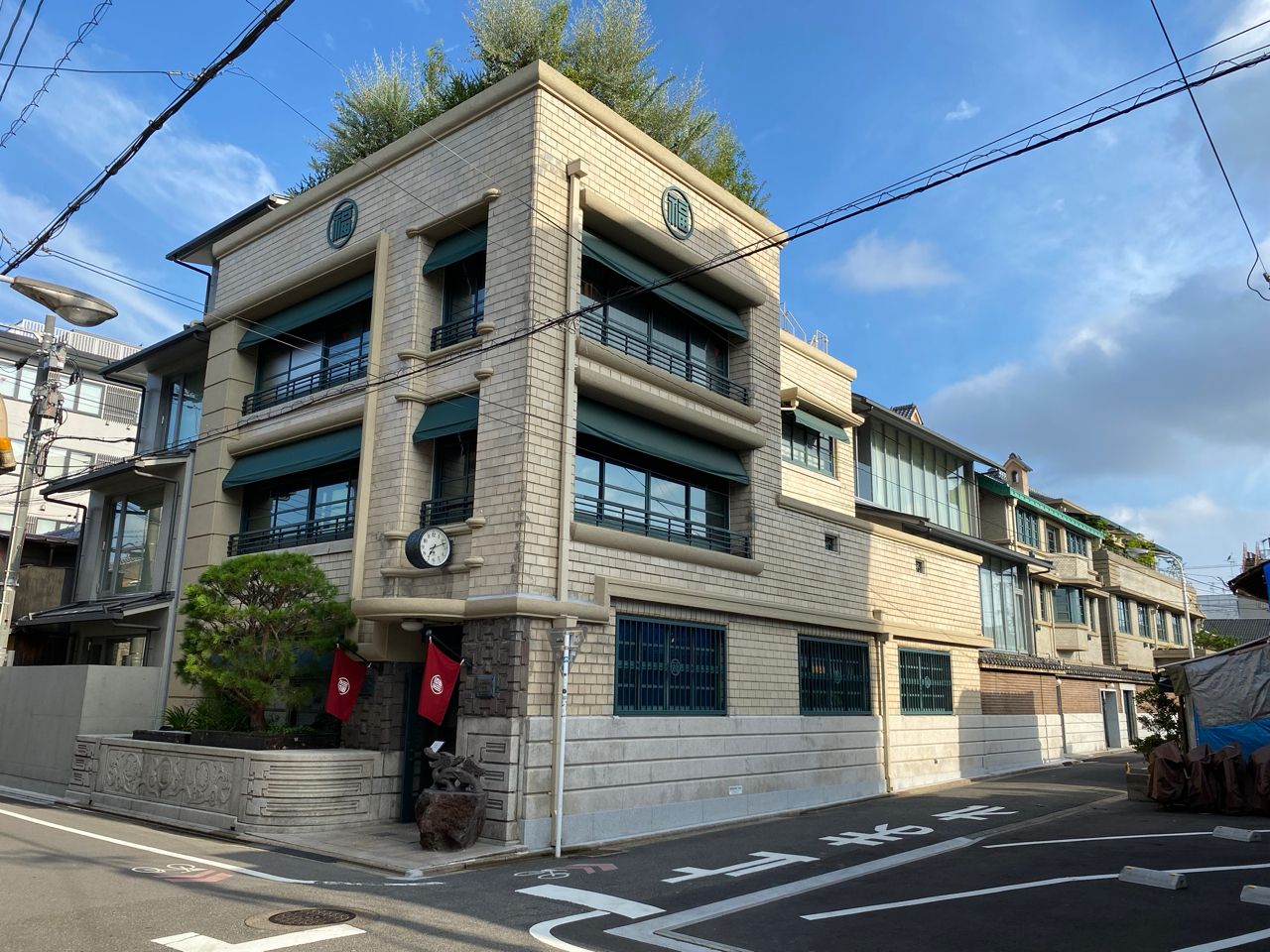
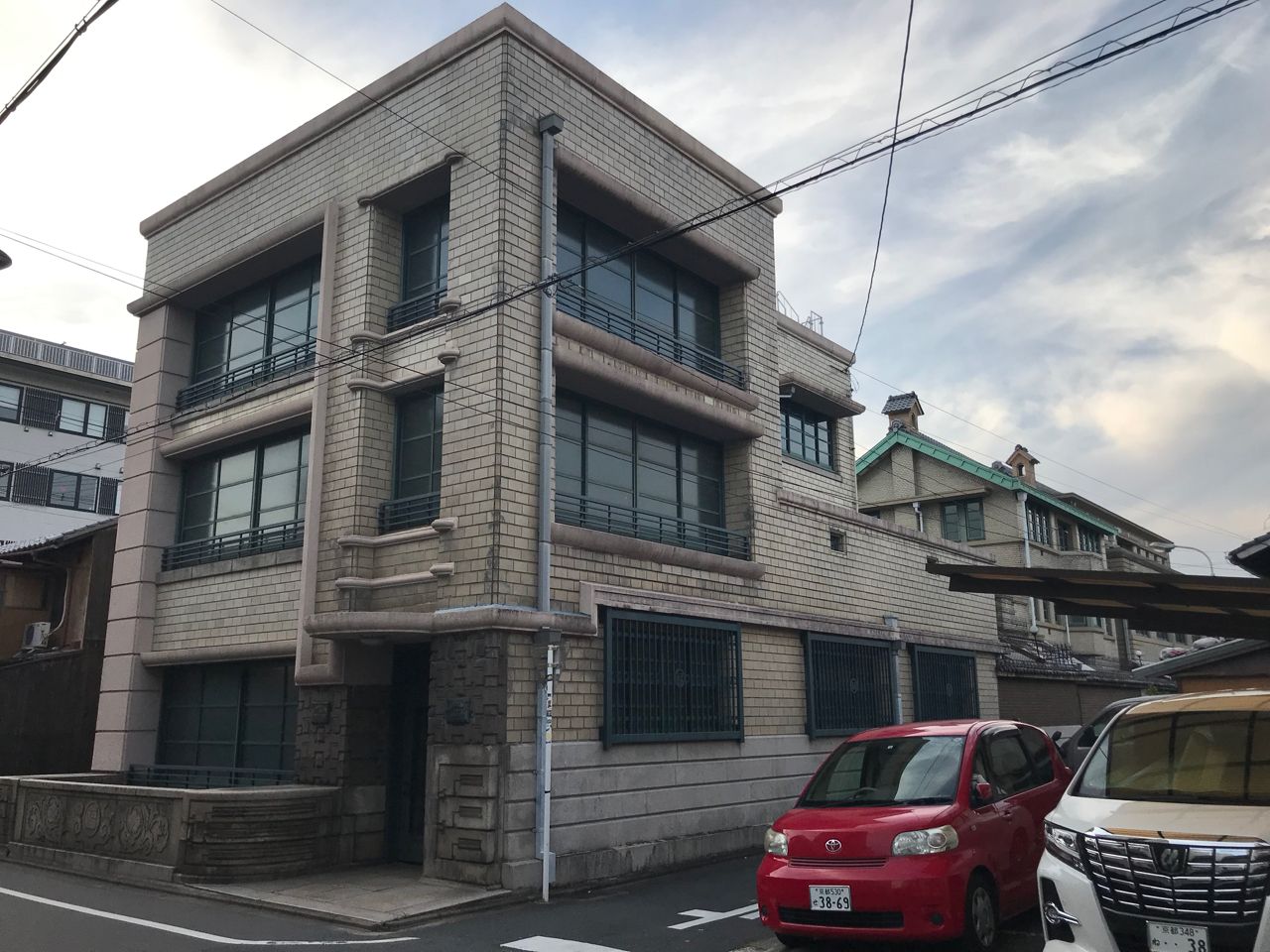
The hotel to the left compared to the old office prior to the renovation. Logos are put up, flags, a clock, a statue and some bushes and small trees have been planted in the front and on the rooftop. You can also see the new building filling out the space to the left and also to the right between the old buildings.
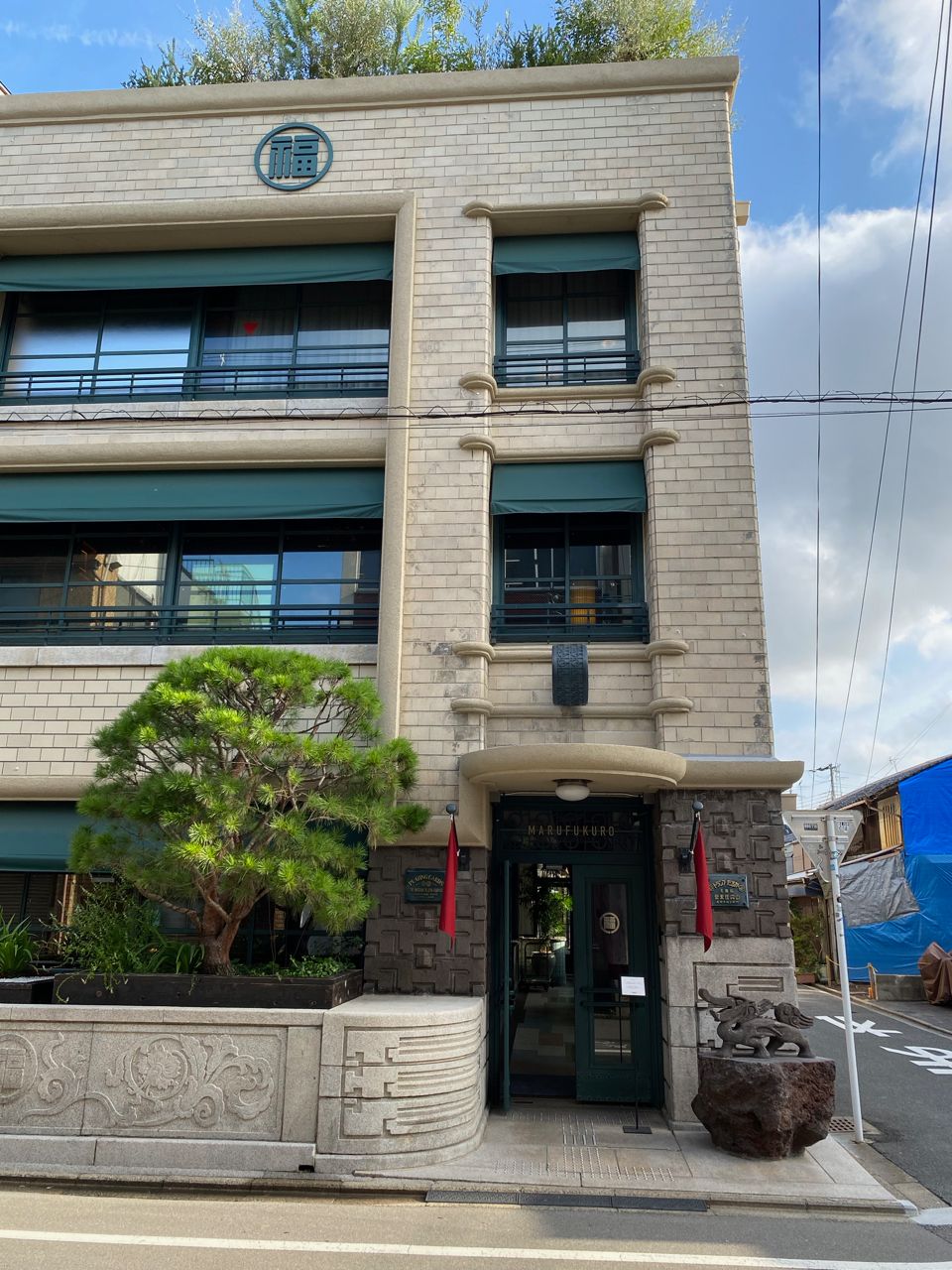
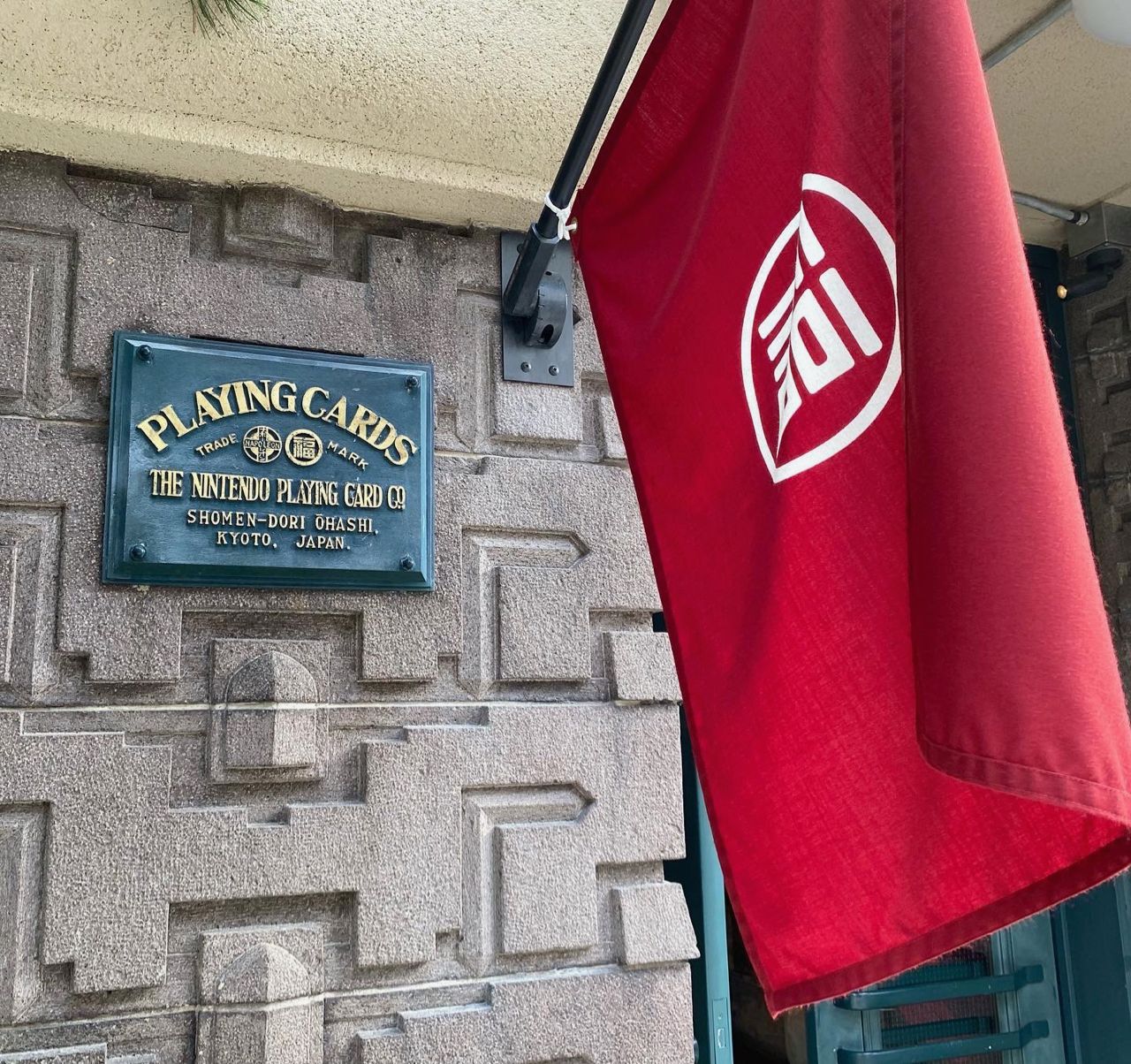

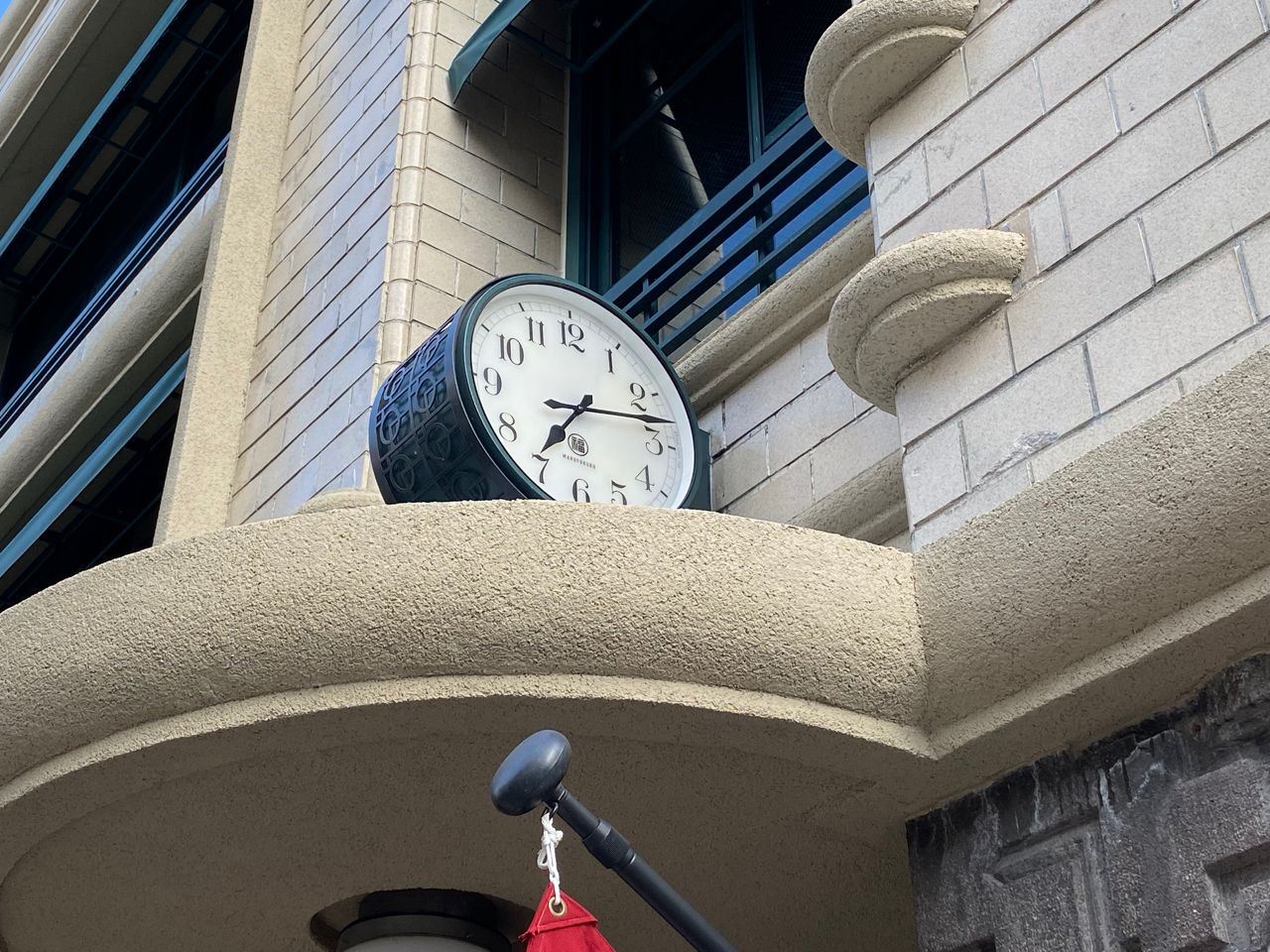
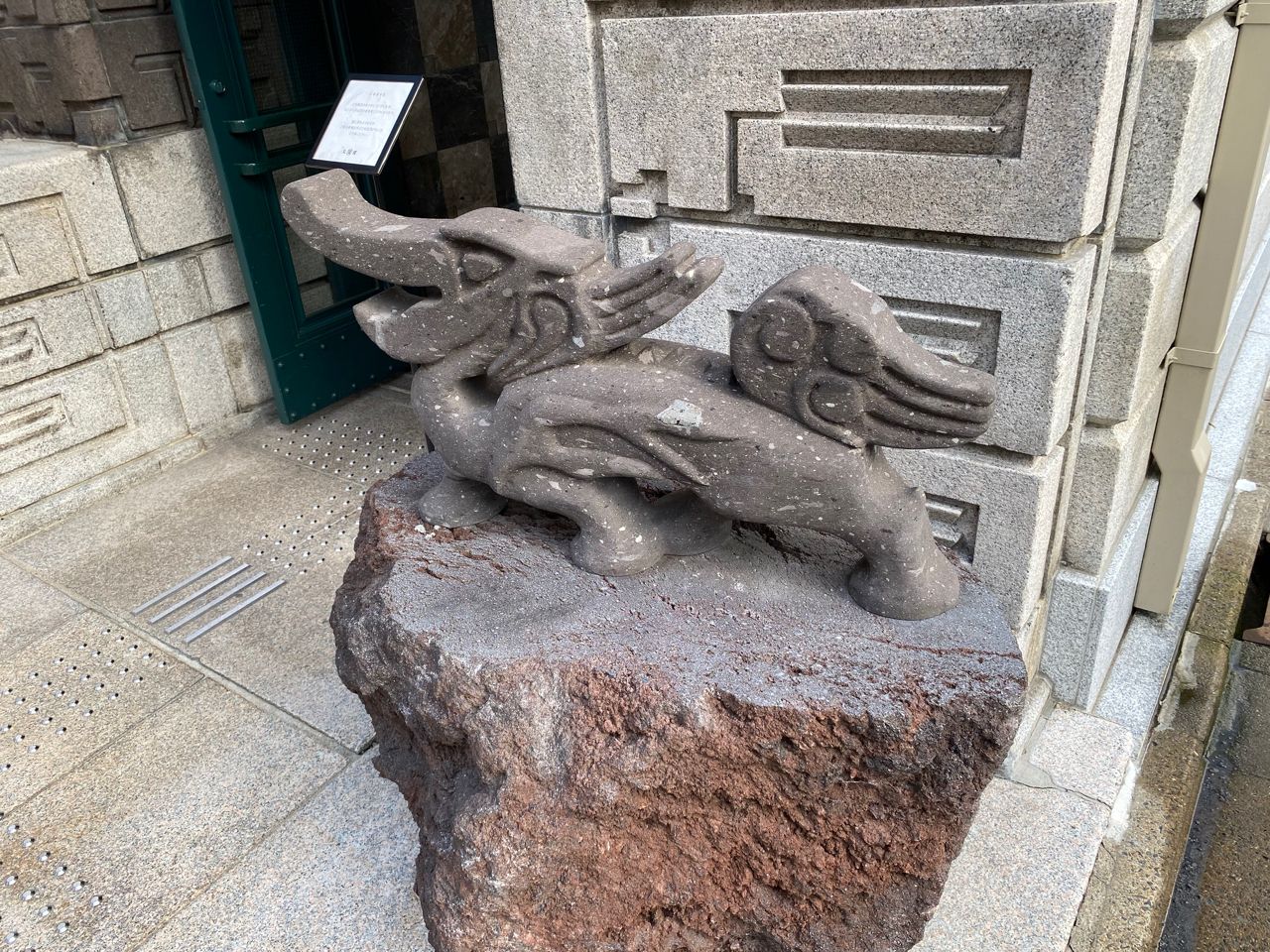
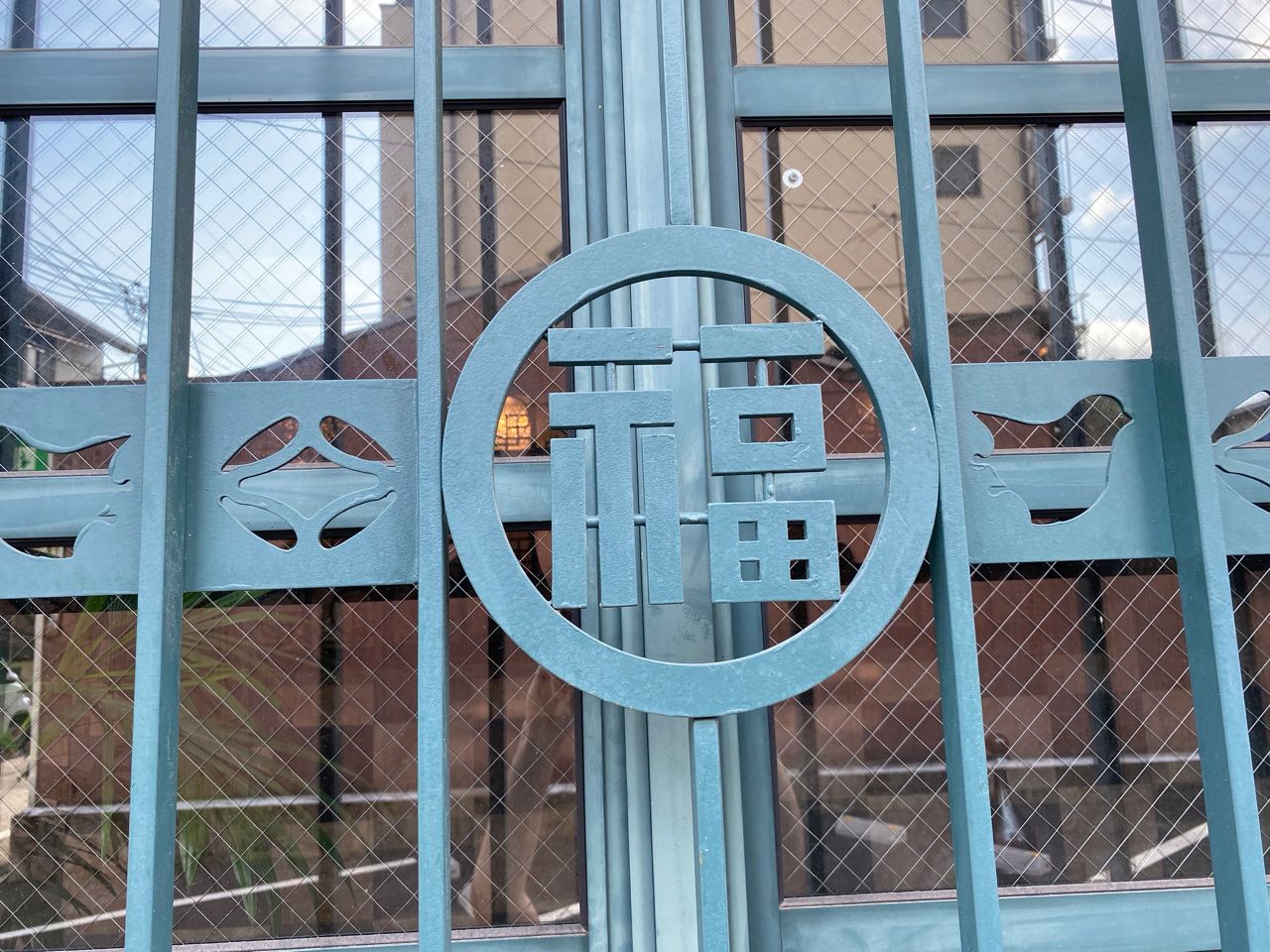
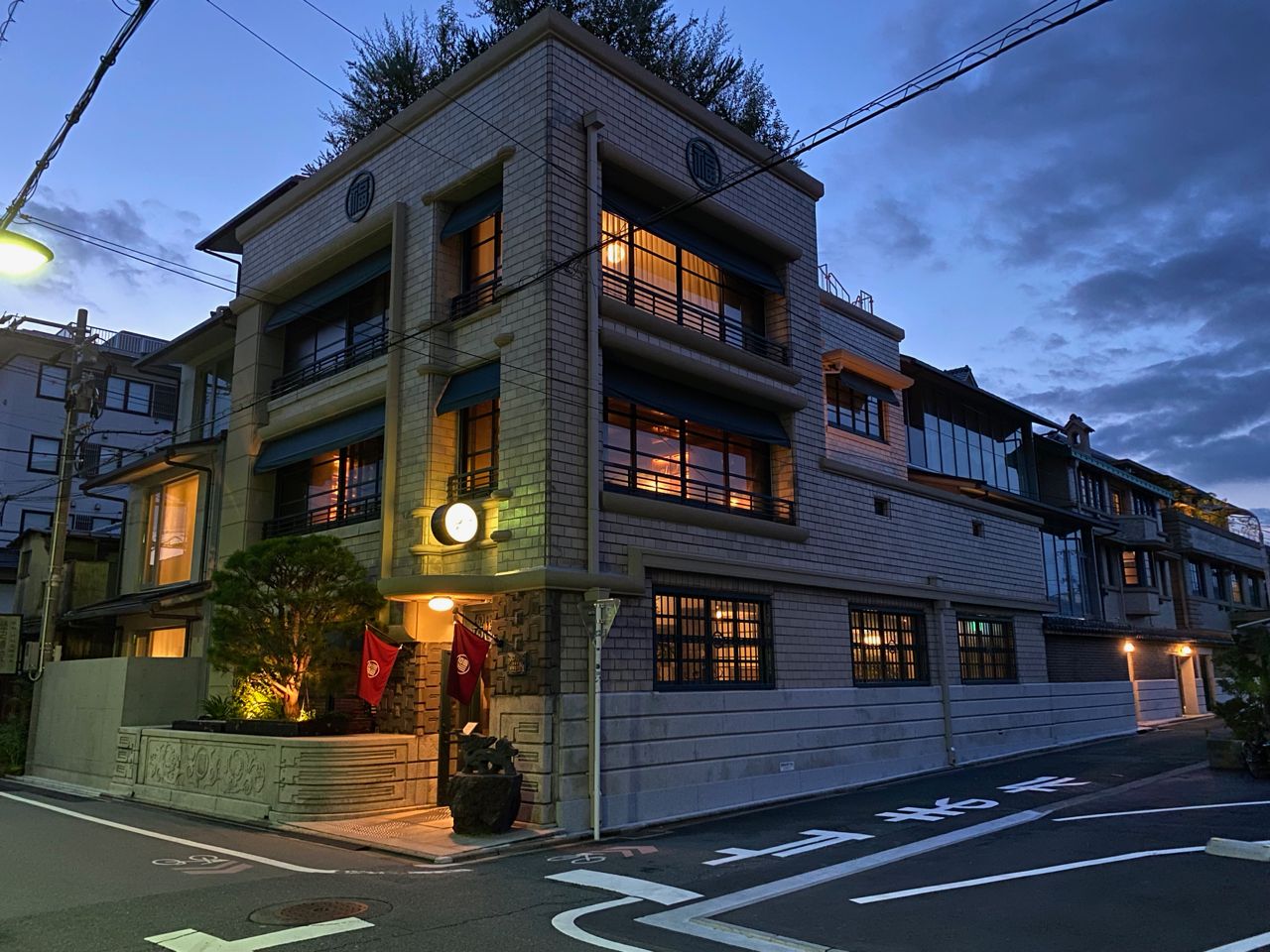
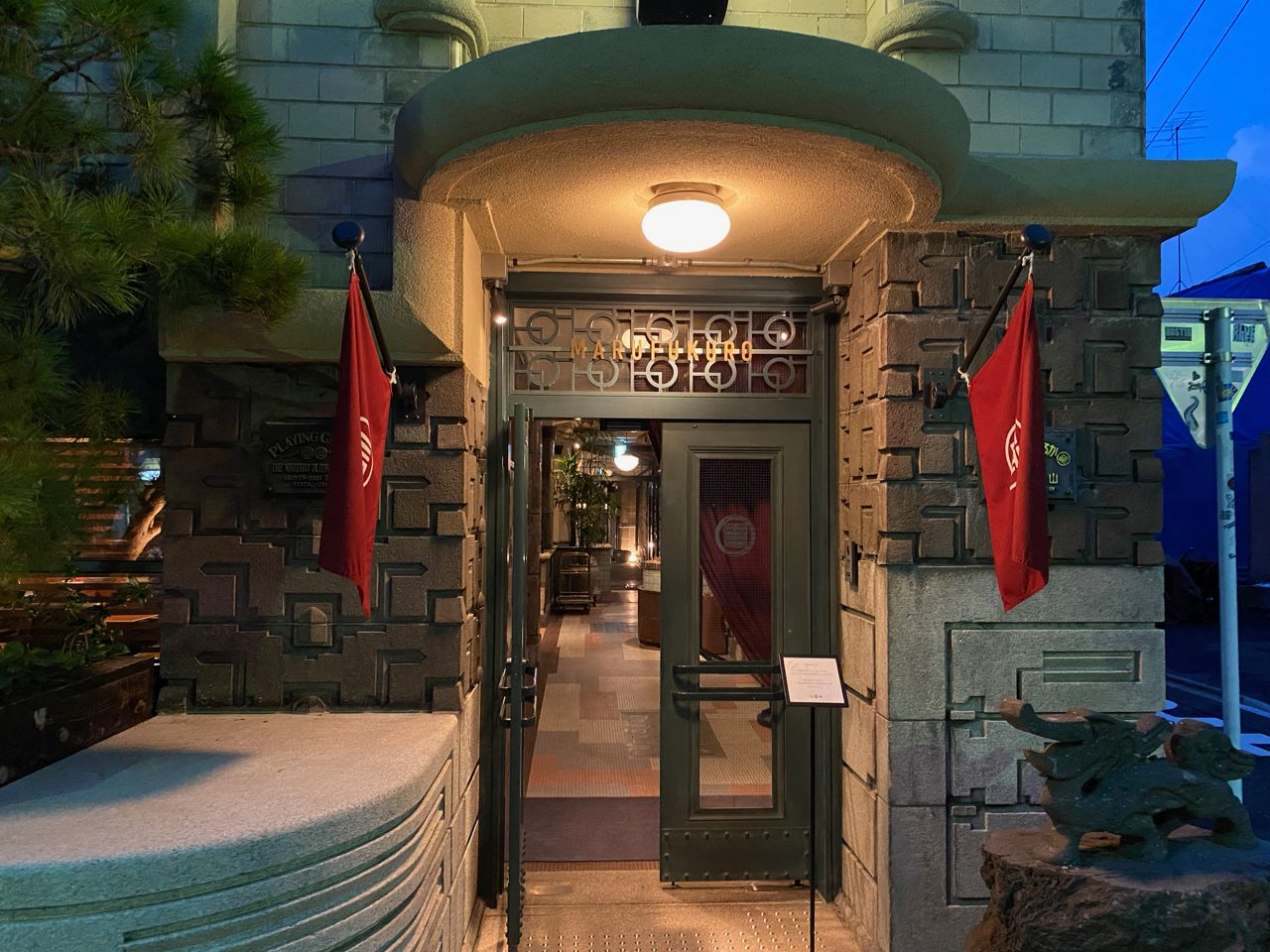
Source: Author.
There aren't many rooms at Marufukuro. The original buildings are only three storeys high and the lot is narrow. A brand new building stands in place of an old courtyard and is connected to the main building at the front. The new building is styled differently from the surrounding structures and spans across the small old lot where the original Nintendo workshop was located. It's also designed by famous self-taught architect Tadao Ando, and as such, it tends to draw in admirers of his work.
Marufukuro 丸福樓
When booking online directly via Marufukuro, you can select your room. Doing so clearly indicates which building you'll be in. My room was on the top floor of the old office building. Upon arrival at the hotel, I received an explanation of the origins of the buildings. The first building (denoted by a spade in the image below), was the main office building. The diamond represents the new building. The heart used to be the Yamauchi family home and included a guest room for visitors. And the club is the site of the old warehouse and manufacturing centre. I could visualise weathered shipping crates stacked with playing cards being carried through the gate, ready for distribution across Japan and the globe.
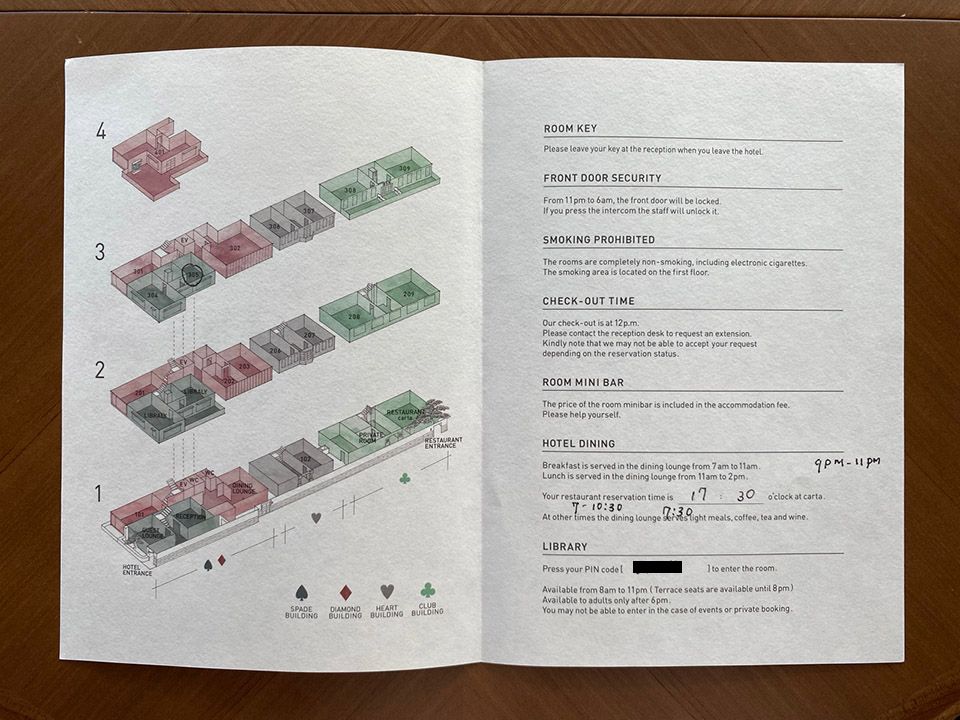
Echoes of the past exist everywhere within Marufukuro's walls, whether it's framed hanafuda, antique clocks, or other storied items that now act as tasteful interior design pieces. The atmosphere is heightened by friendly staff who happily explain the building's history.

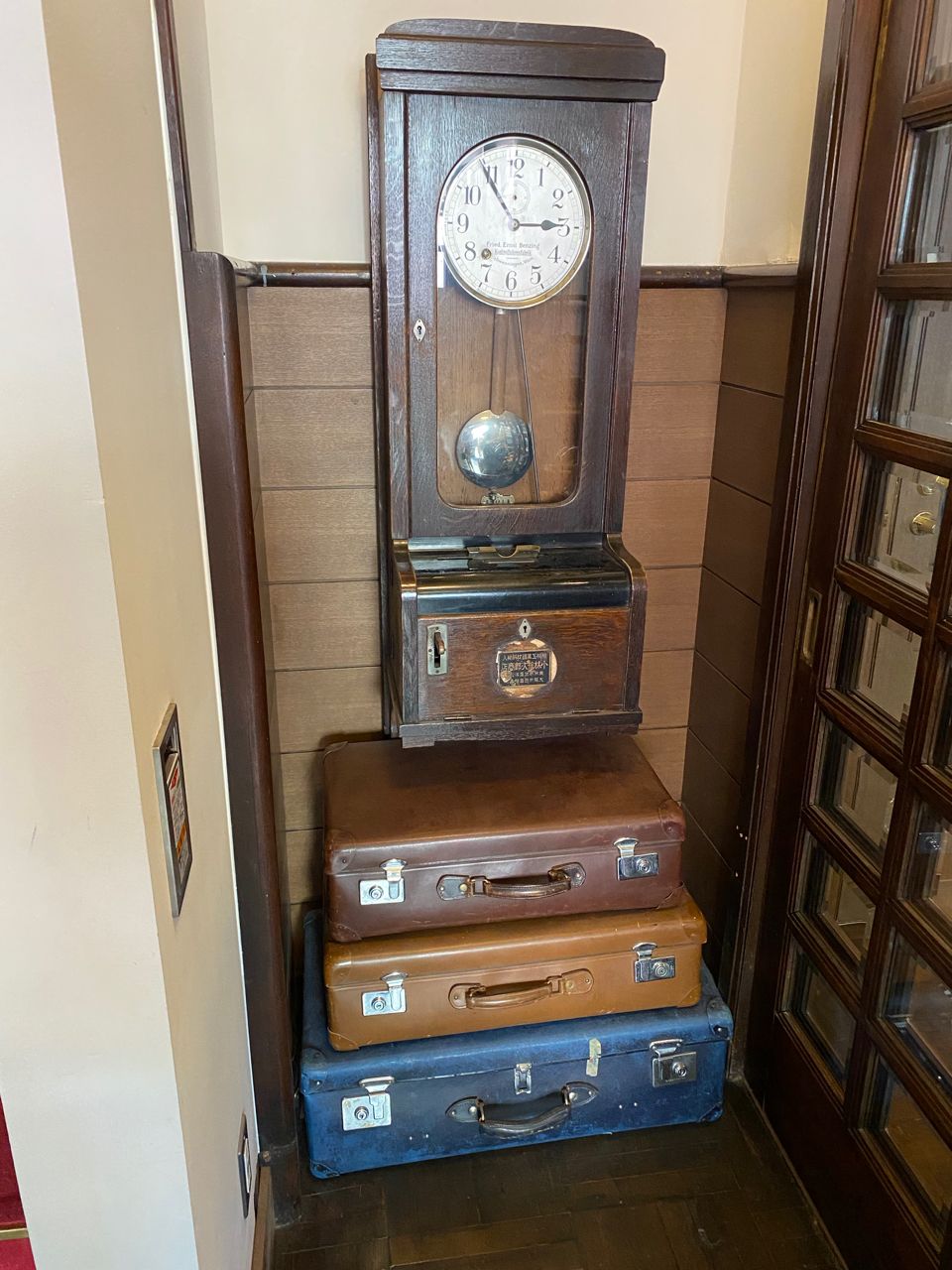
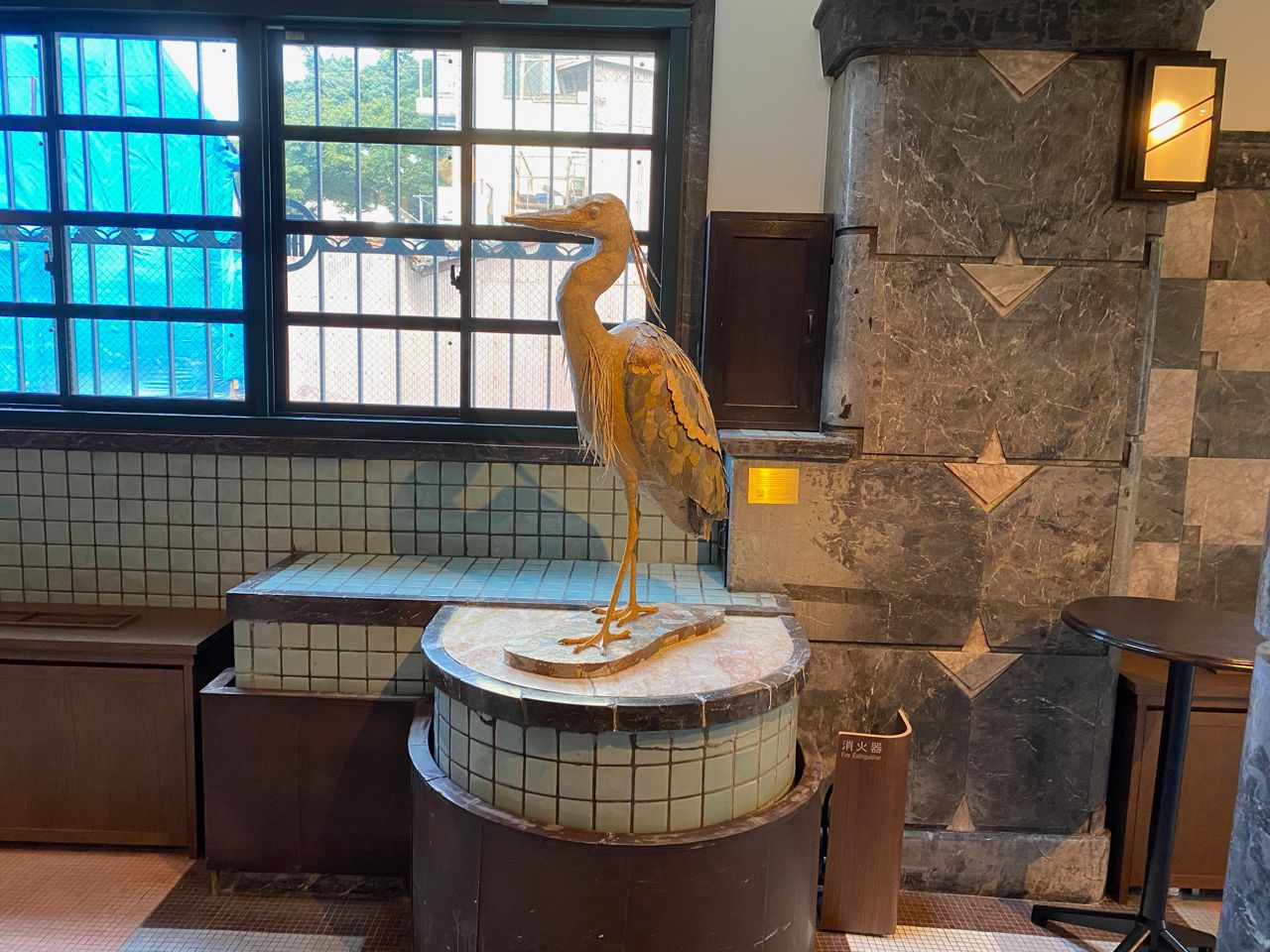
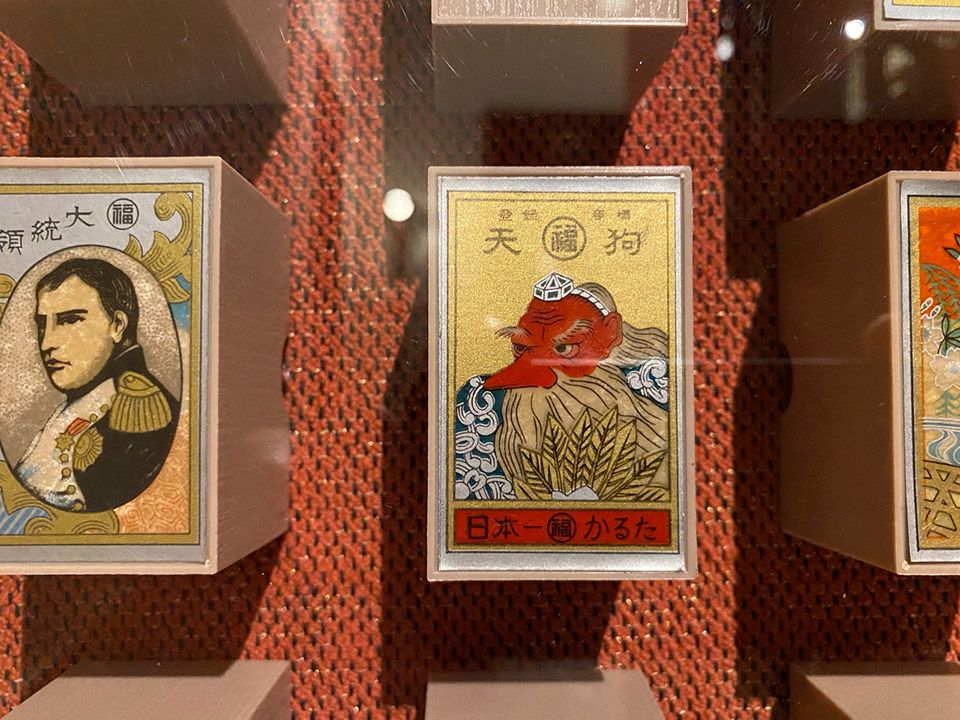
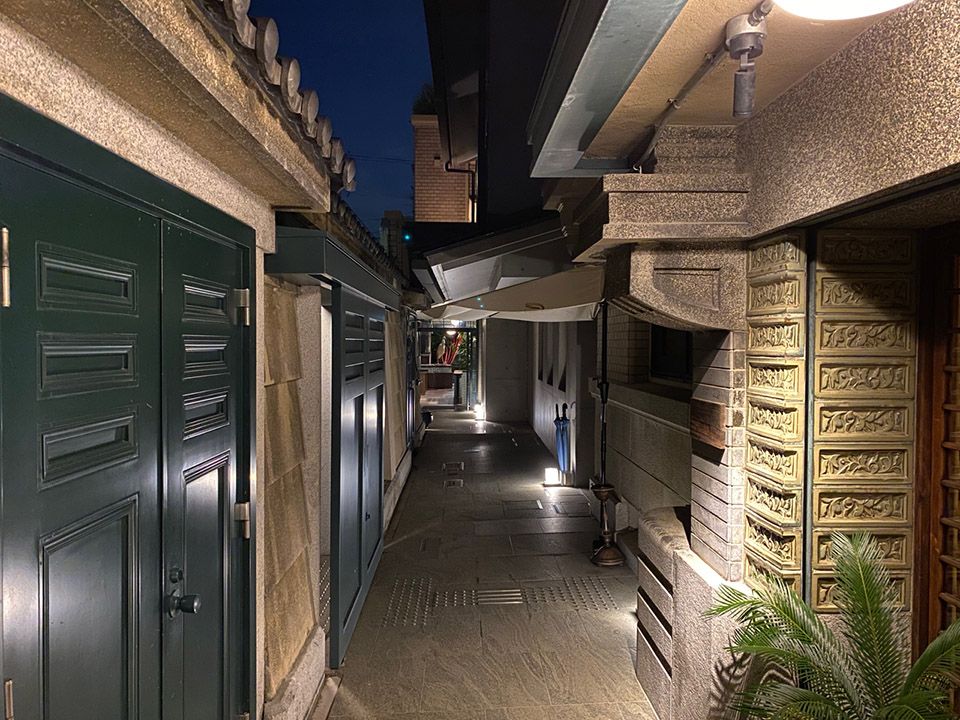
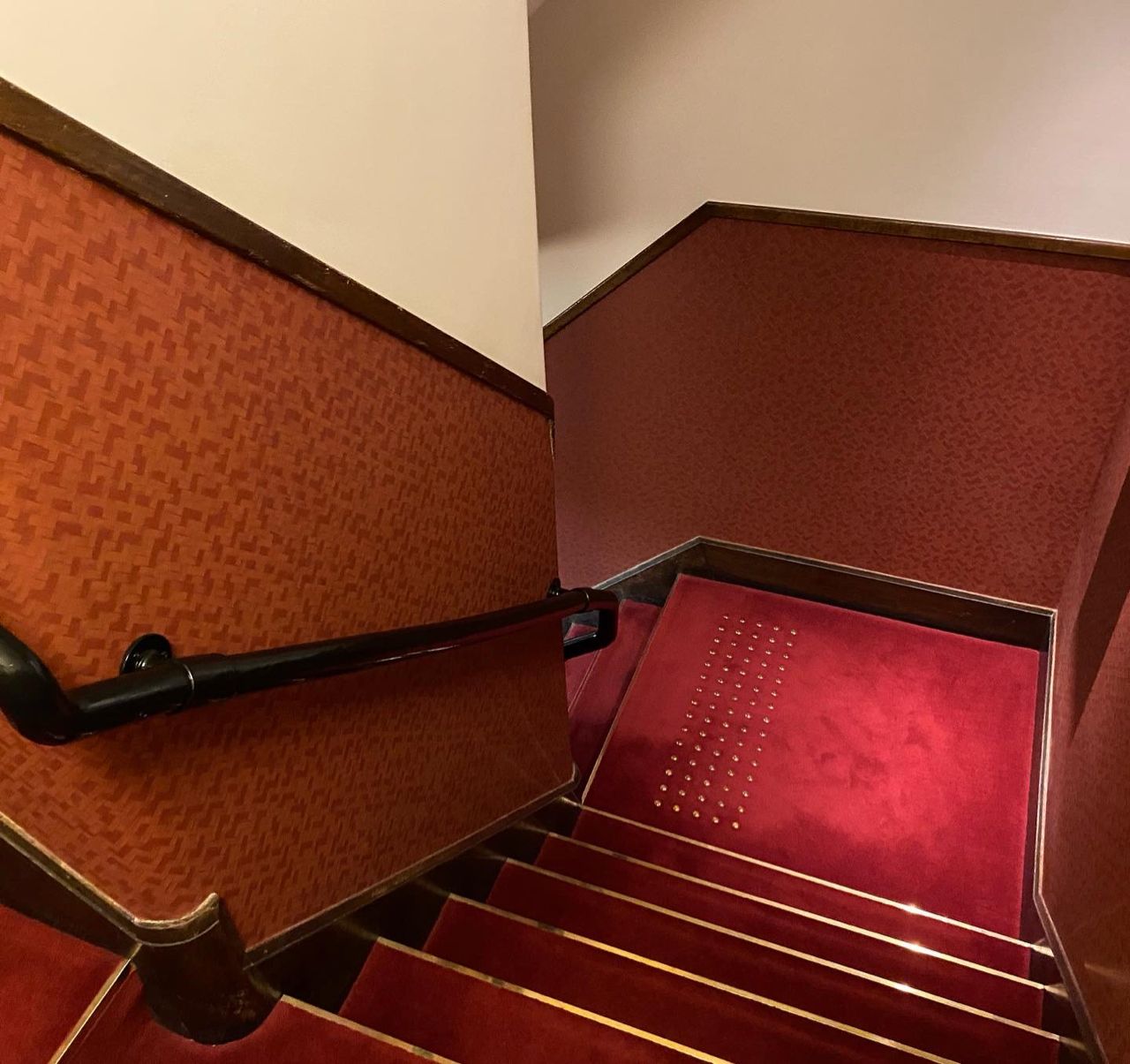
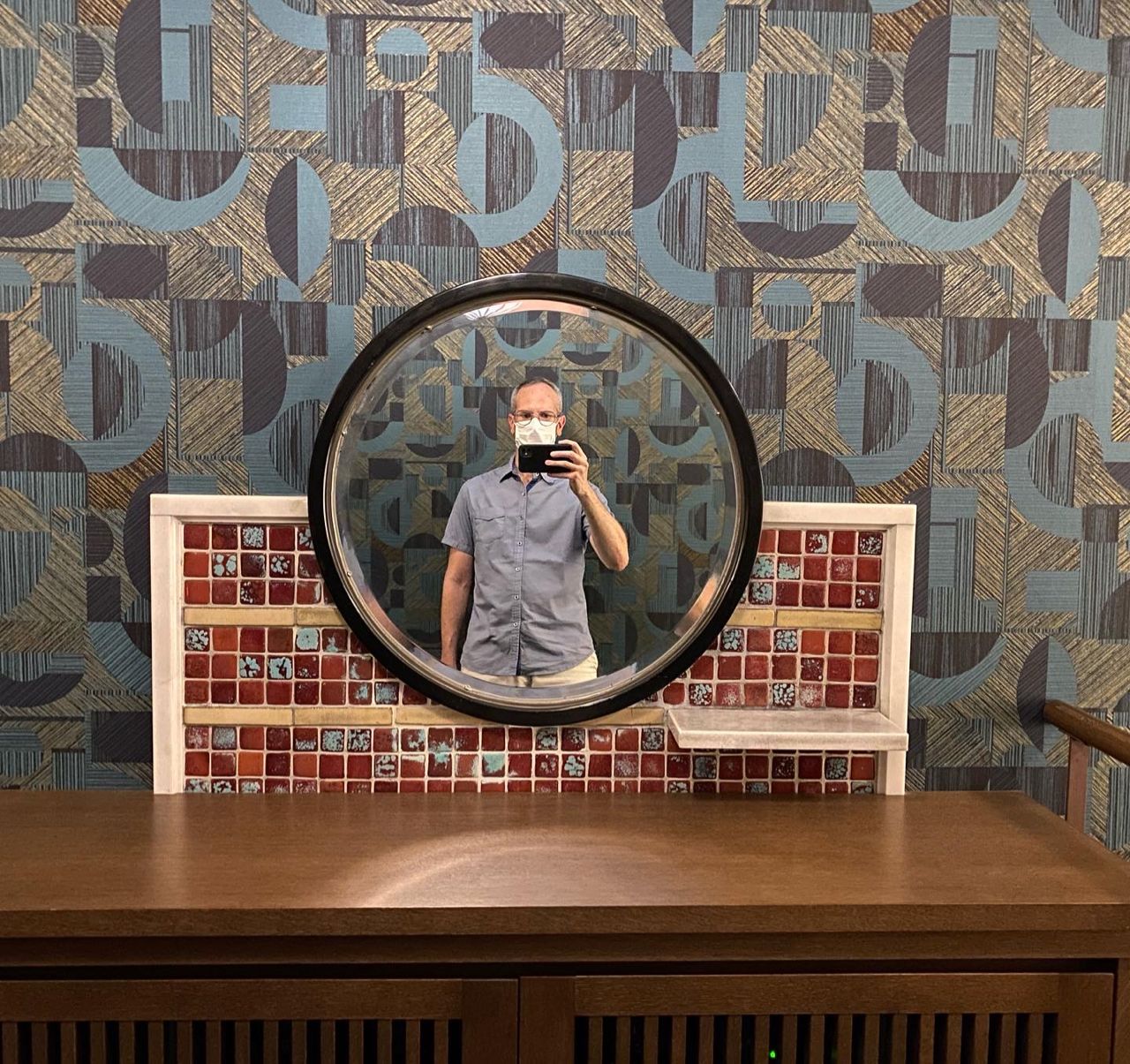
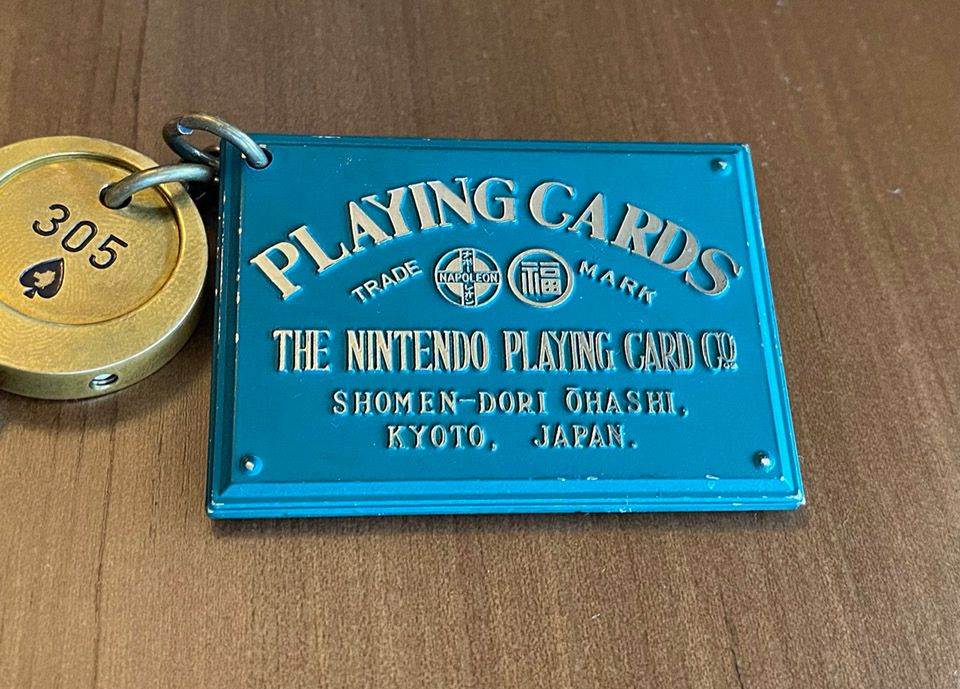

Source: Author.
The guest rooms themselves are also filled with history. I was greeted by an enormous gate upon entering my room; it was originally located in the old courtyard and was now used to decorate the room. The room itself is large with a well-stocked minibar and lovely candy that I didn't hesitate to gobble up. The bathroom is exquisite. The Japanese shower toilet detects your presence as you enter and automatically opens for you. There's also a large bath that closely resembles those found in onsen.
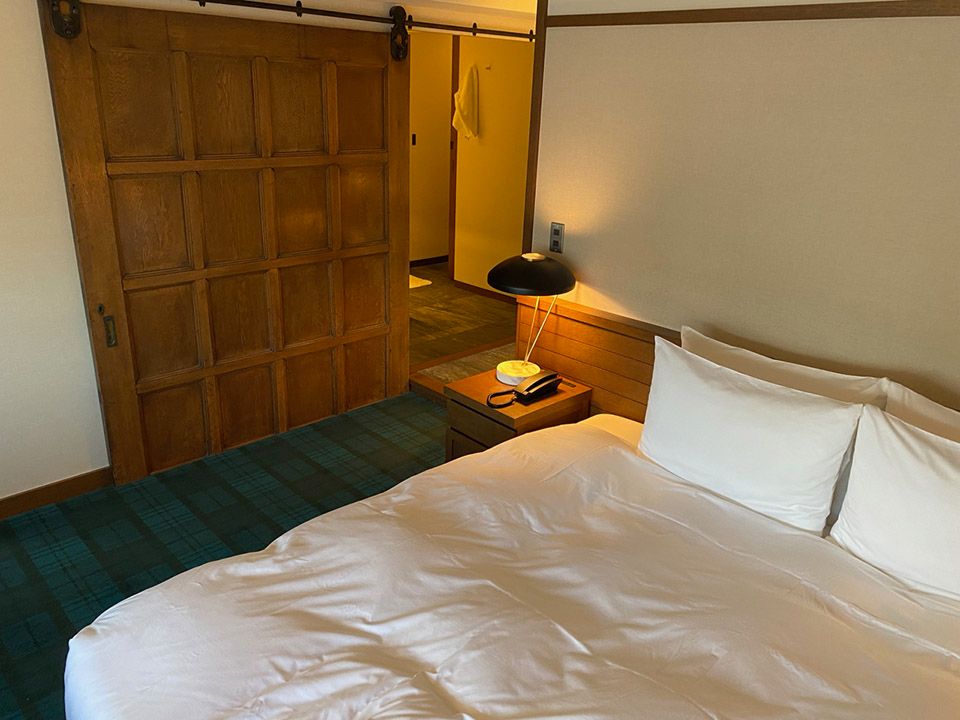
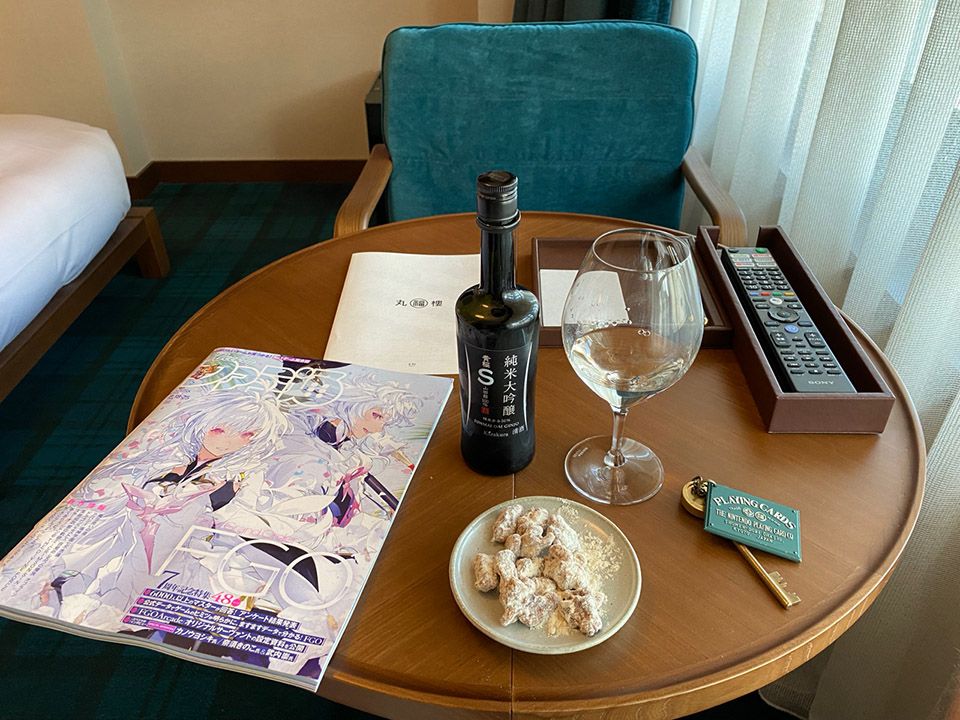
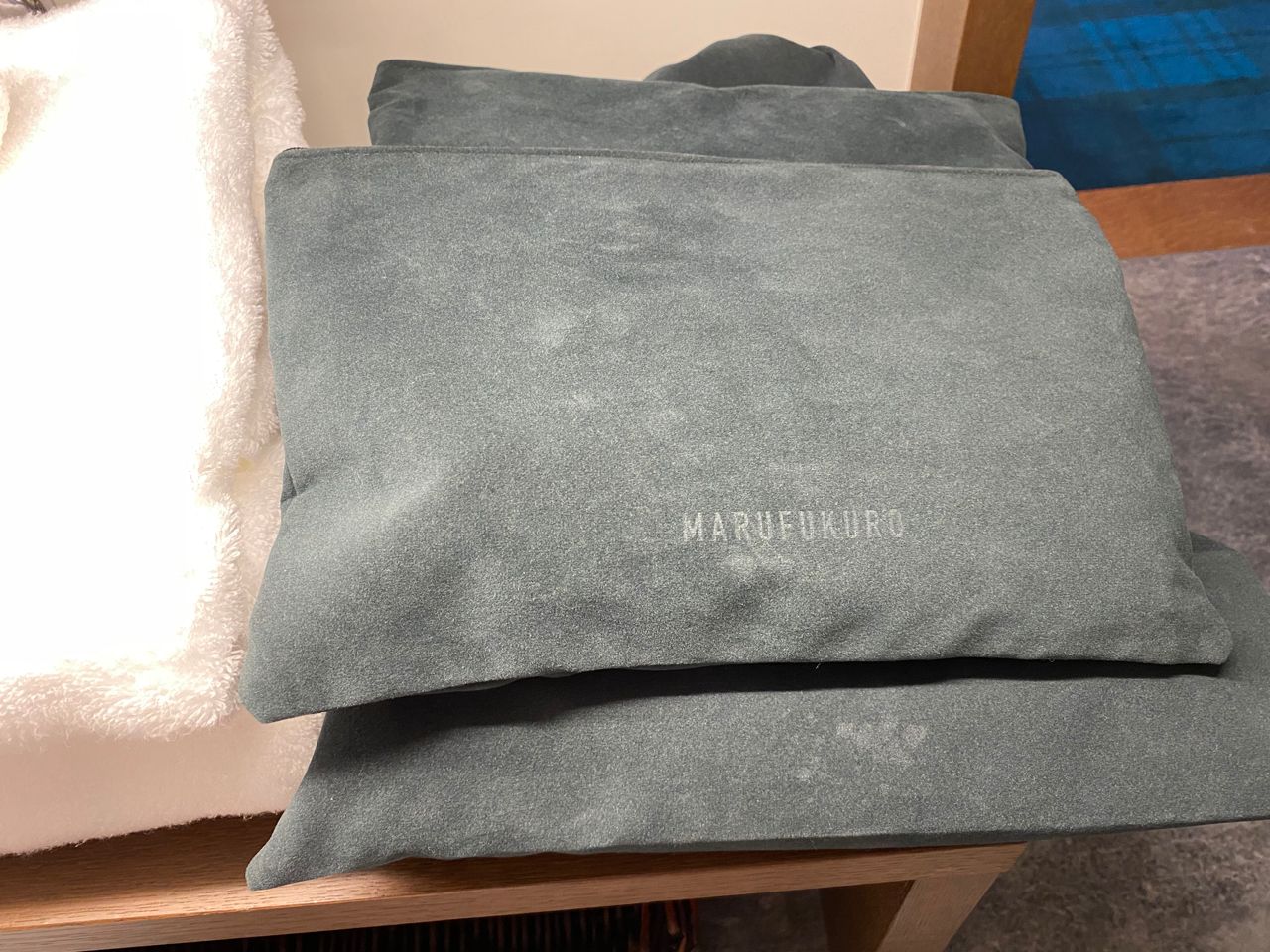
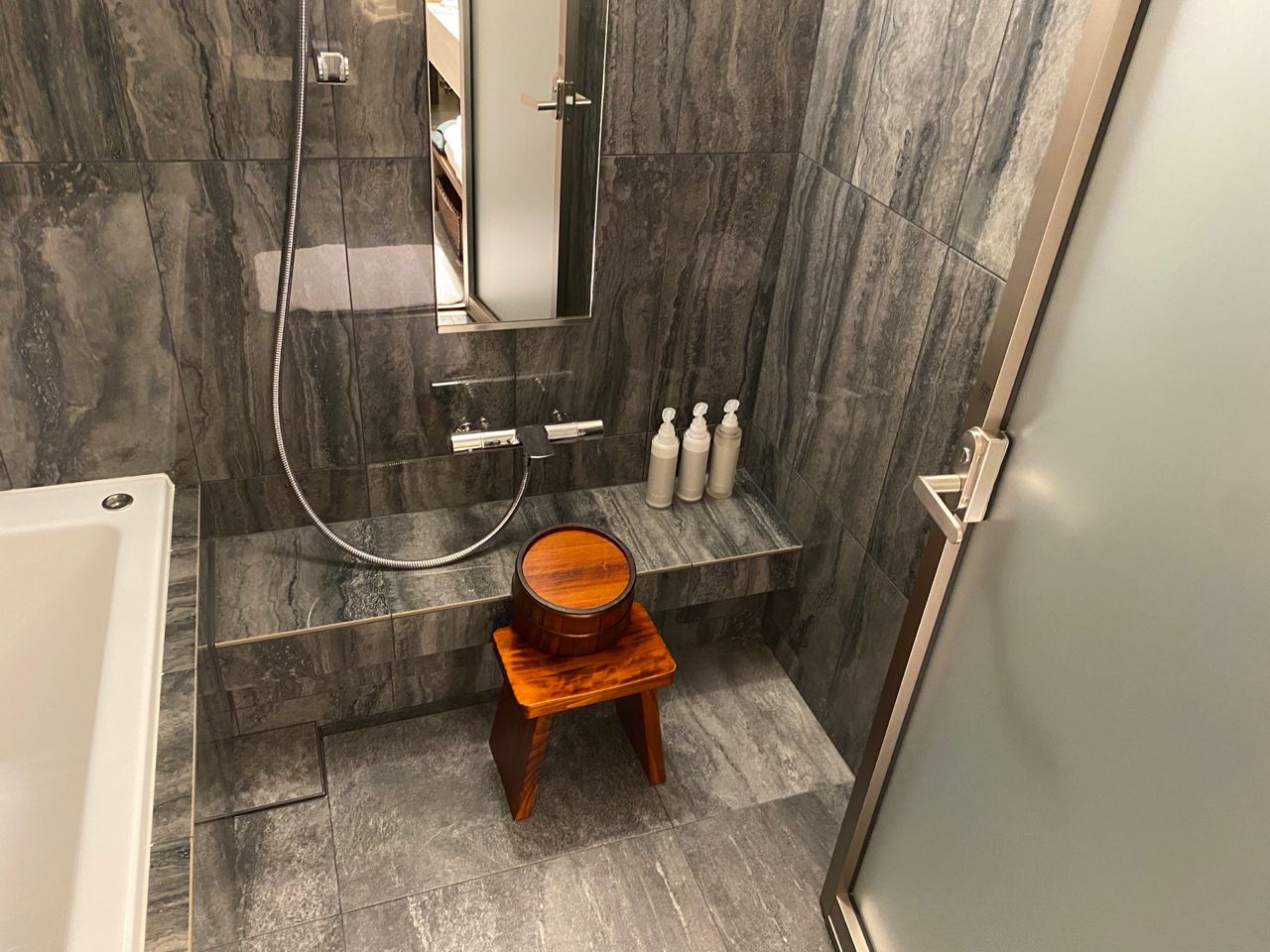
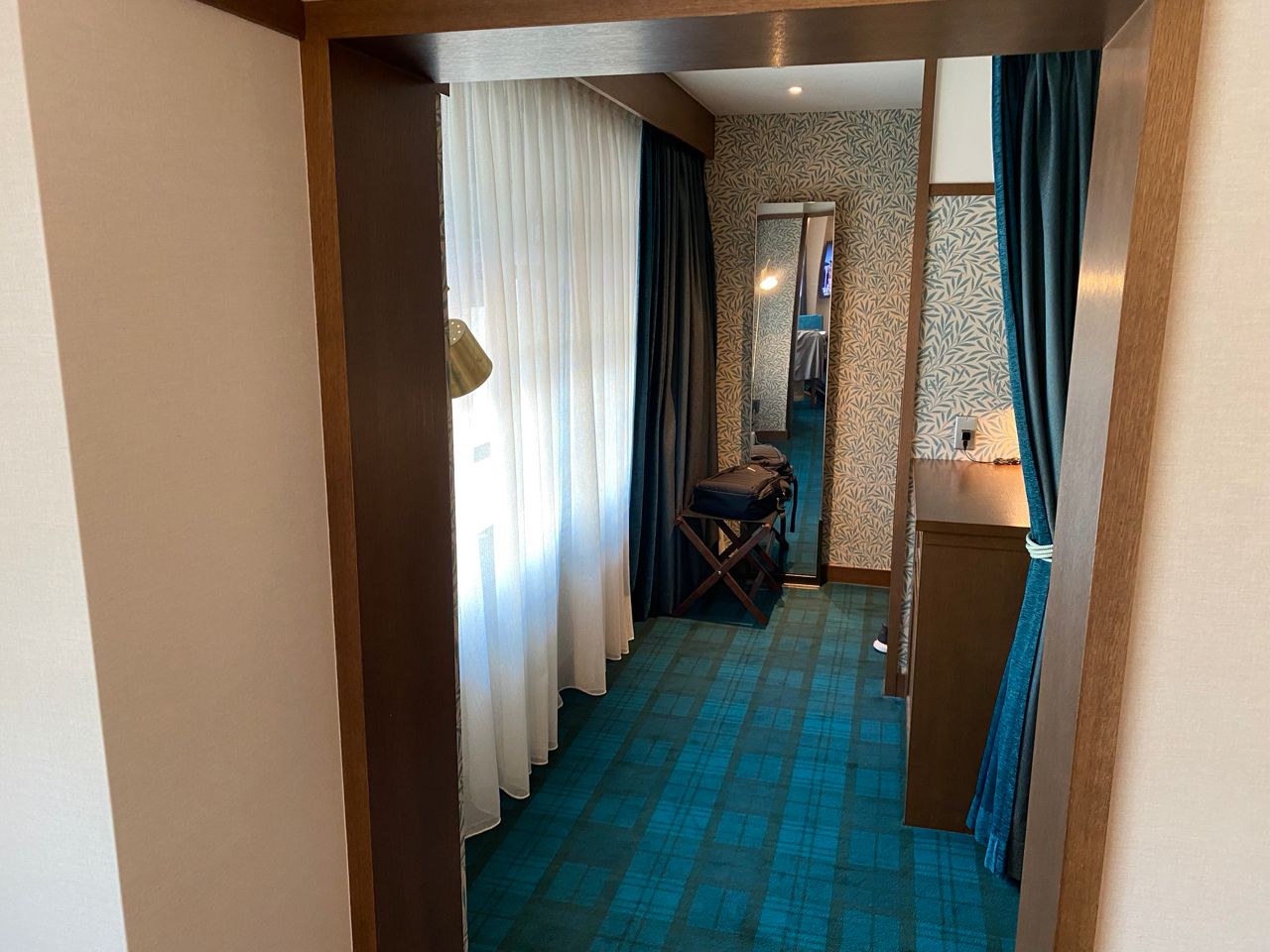
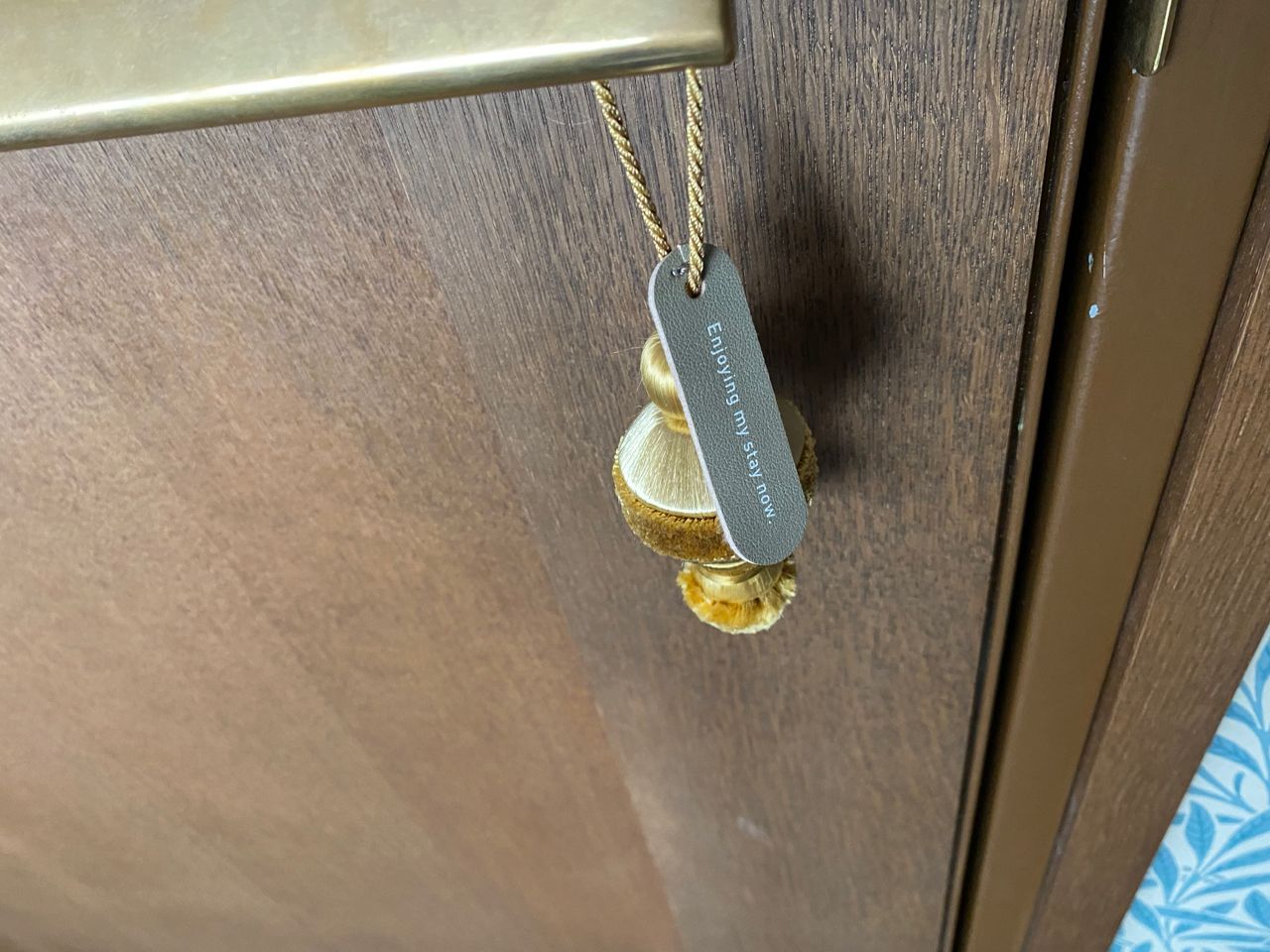

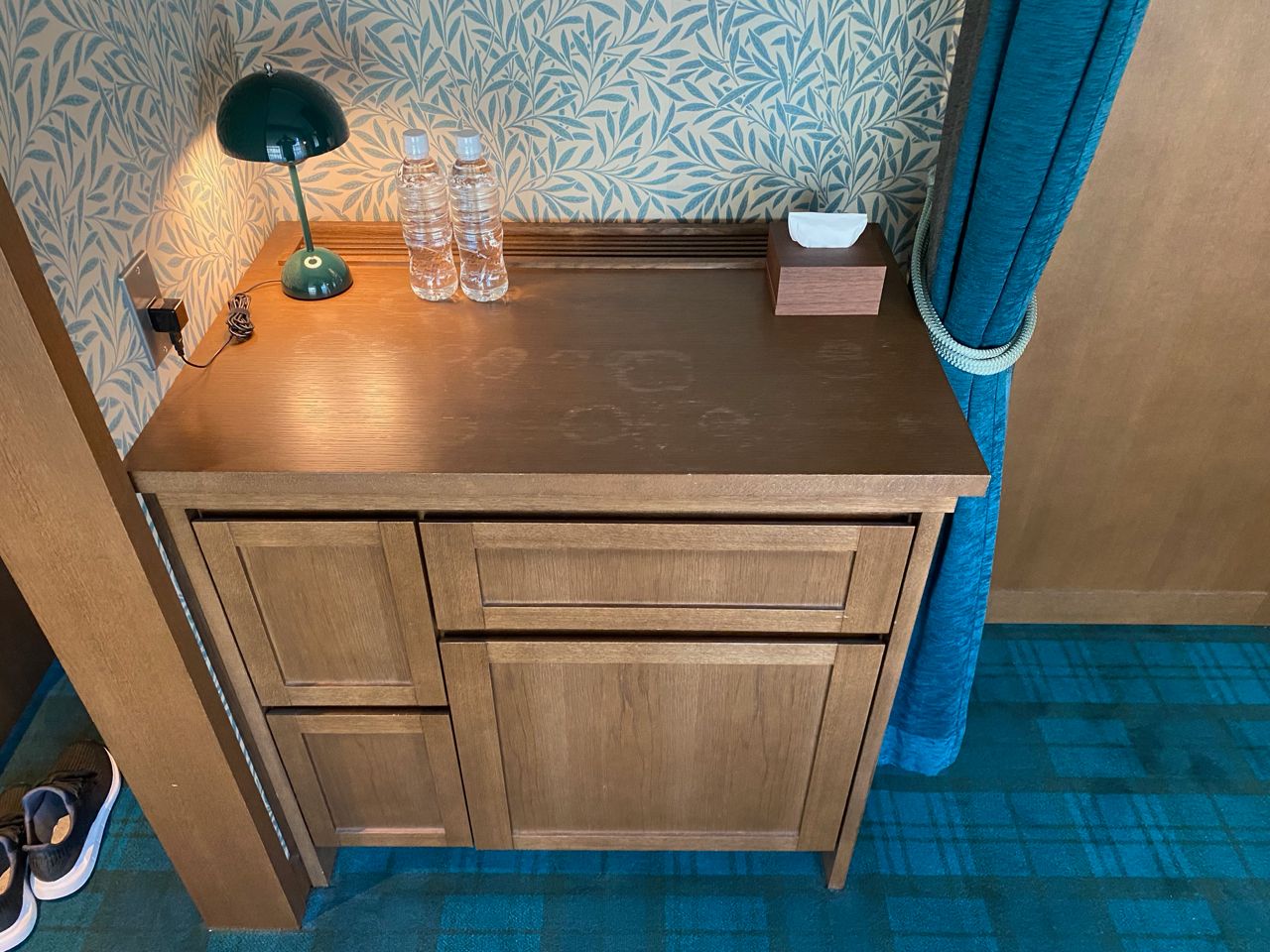
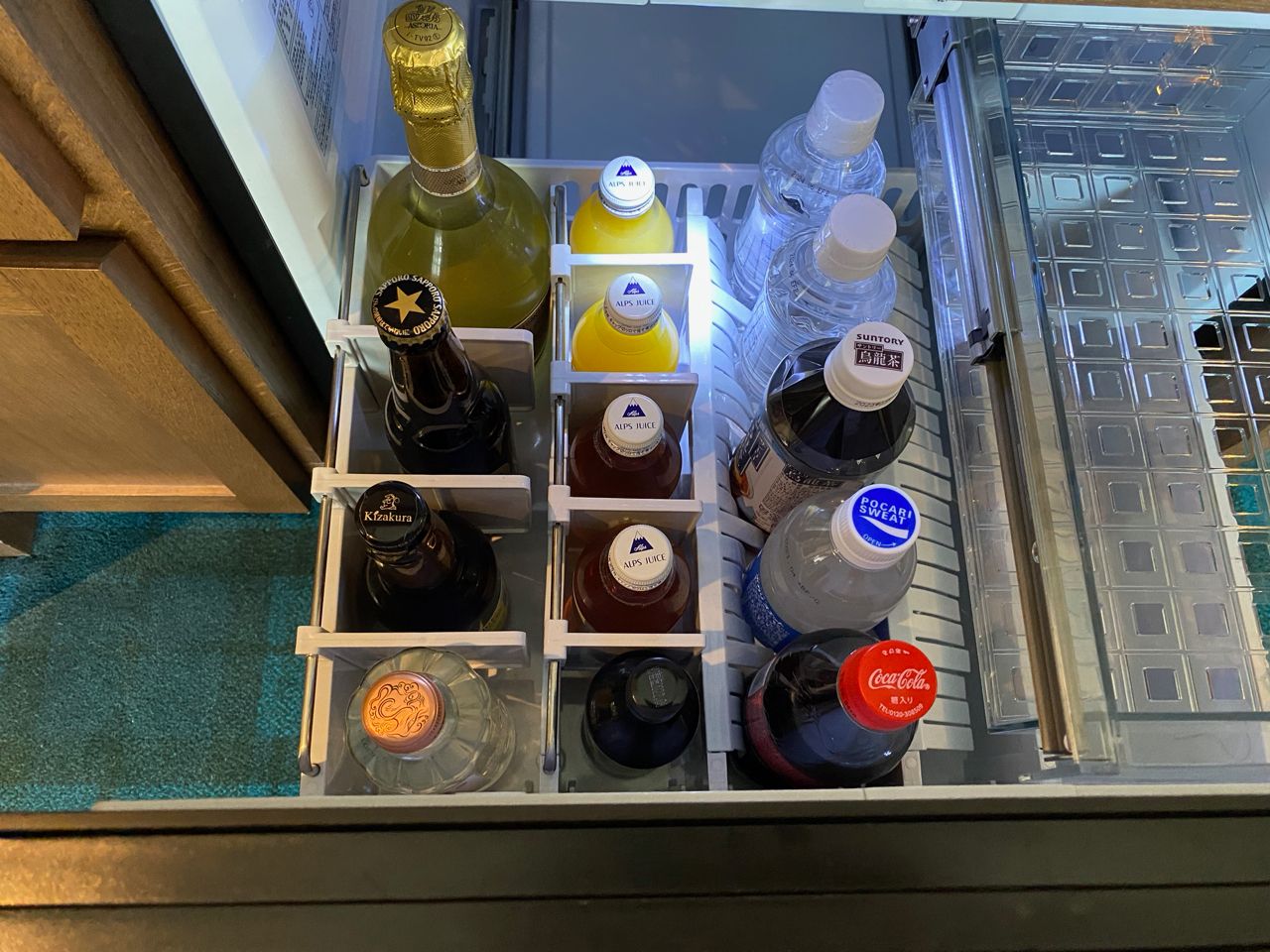
Source: Author.
A library and whisky bar occupy the second floor. The latter is said to contain Yamauchi's favourite whiskies and gin. I spent most of my waking hours at Marufukuro in the library, named dNa. This fascinating space houses books on Kyoto, topics that inspired the creative minds at Nintendo, the history of Nintendo itself, and various pieces of art. It also contains multiple 3D screens where you can explore Nintendo's rich pre-video game product history, including both hanafuda and a range of toys.
Source: Author.
I first visited the library shortly after checking in and spent most of my time there looking through the books about Nintendo's history. Most were in Japanese, and many were about the Famicom, Gunpei Yokoi, and Satoru Iwata. The library also contained Before Mario and the French version of The History of Nintendo: 1889-1980. Fortunately, guests can take their favourite books from the library to the whisky bar to enjoy them in comfort. I picked up The History of Nintendo as well as the huge visual Mother (Earthbound) compendium, headed for the whisky bar, and enjoyed both with a glass of sake.
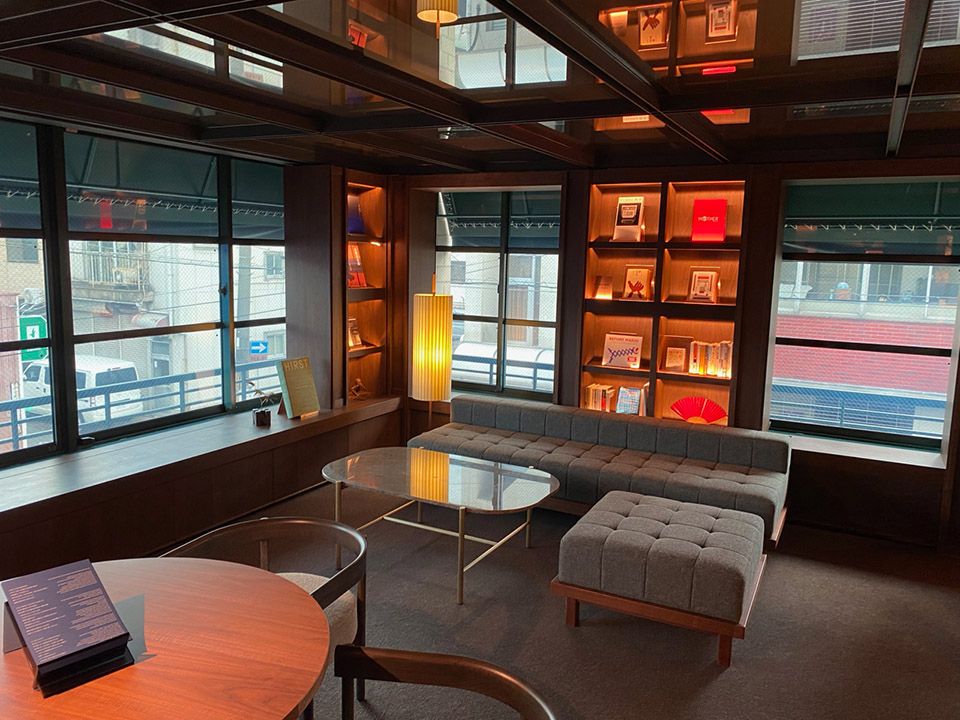
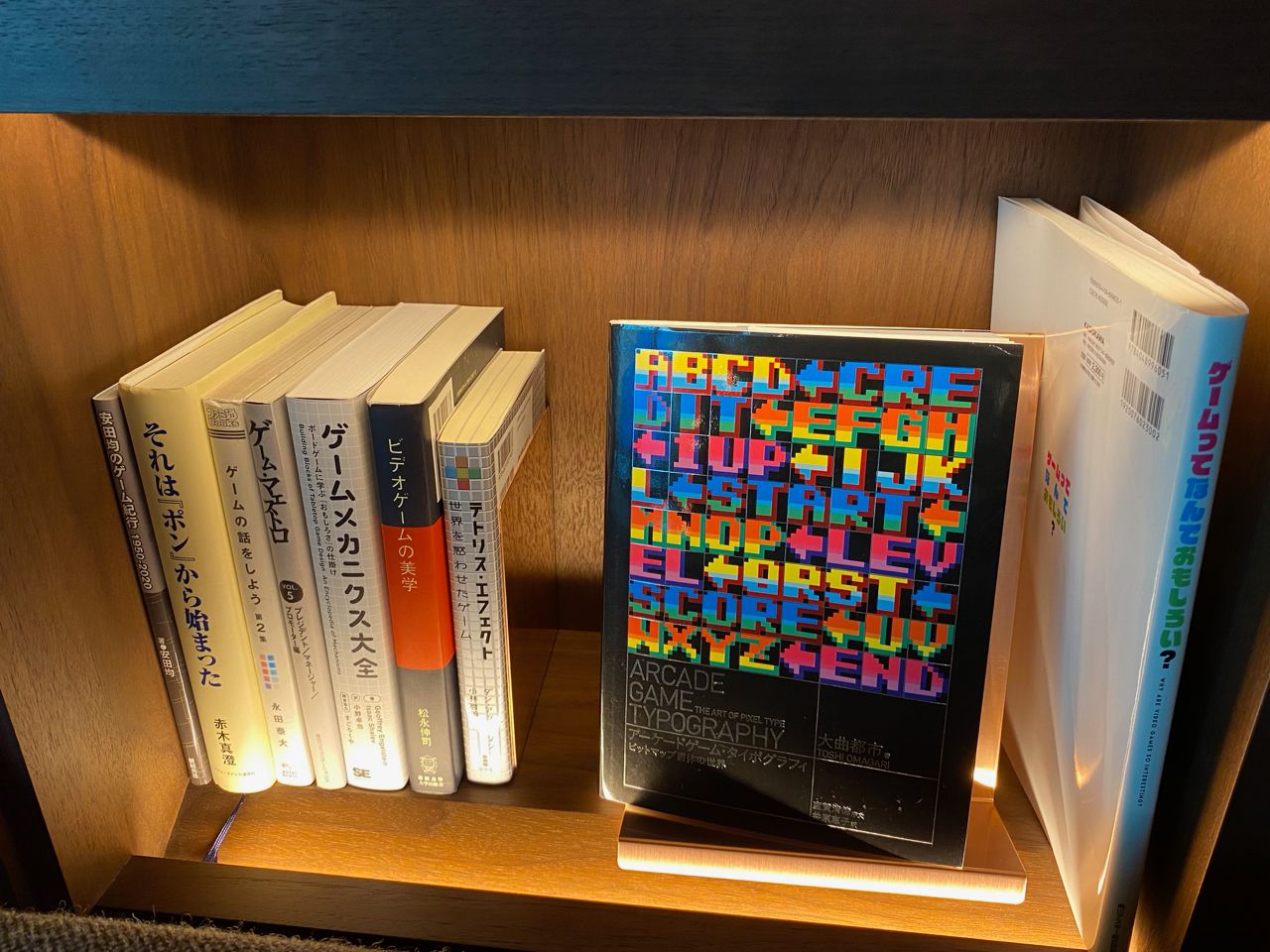

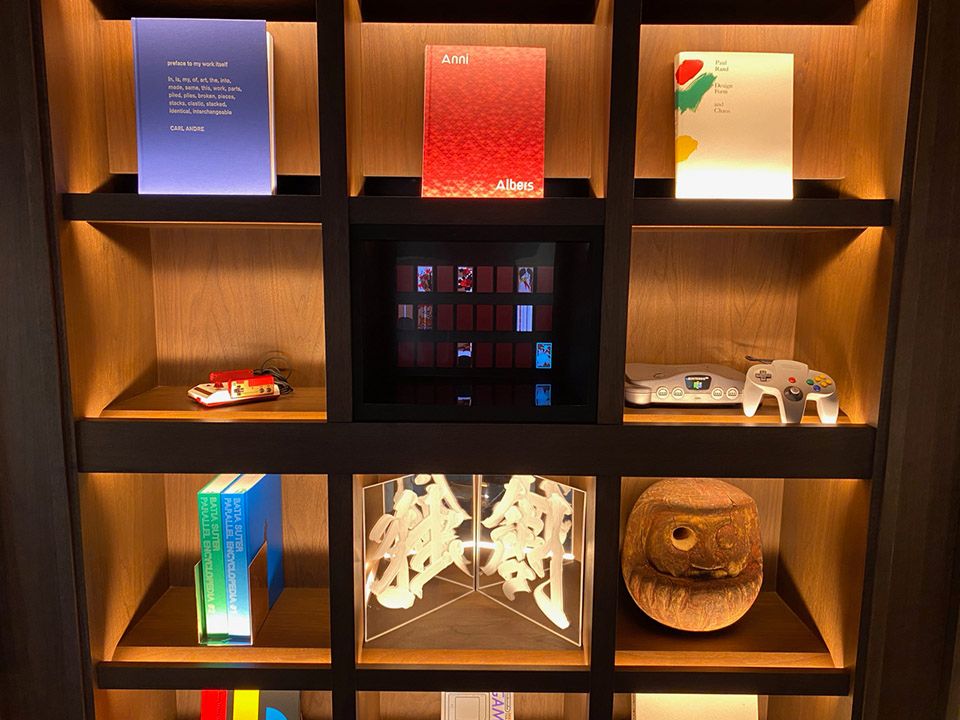
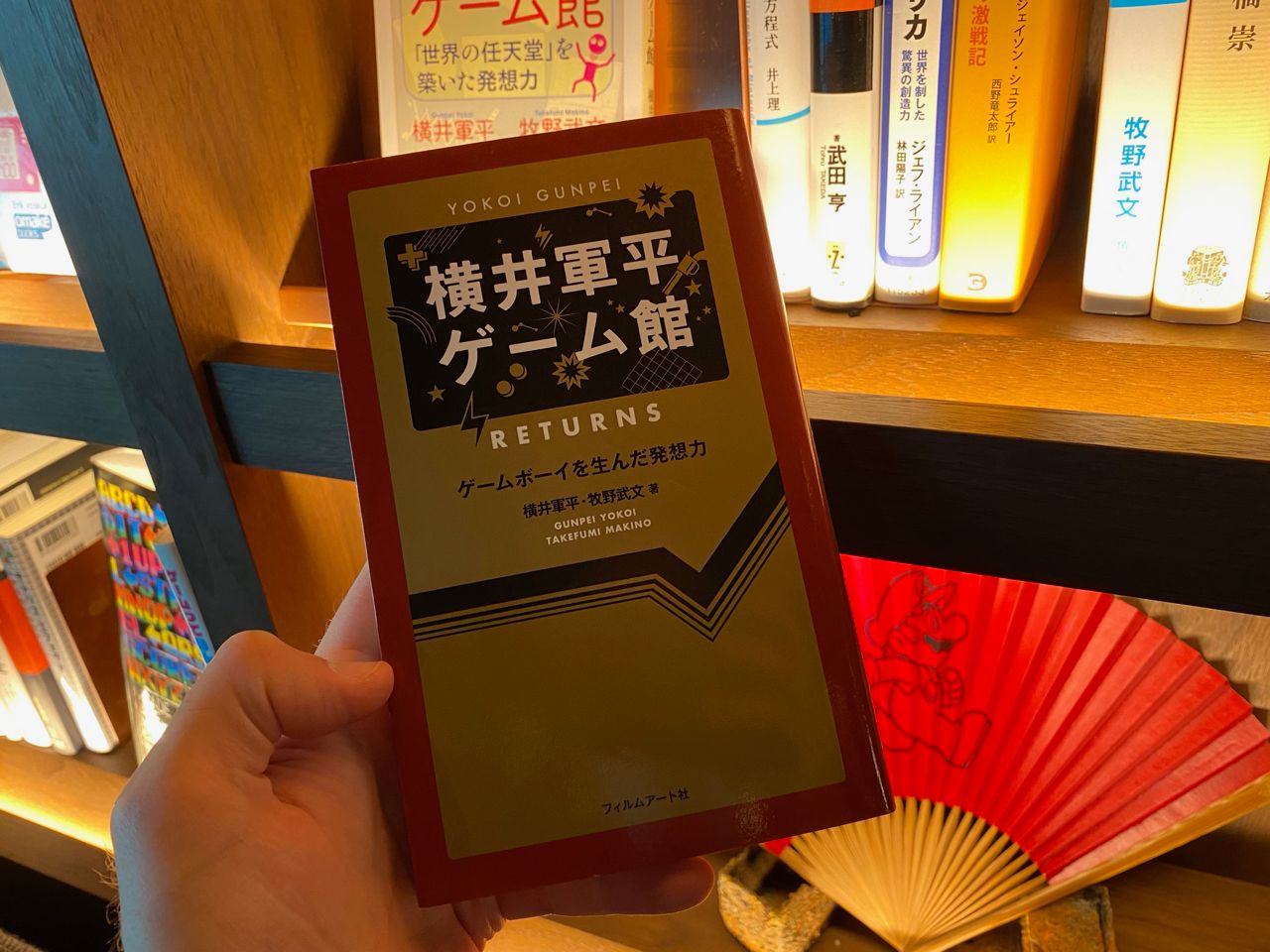
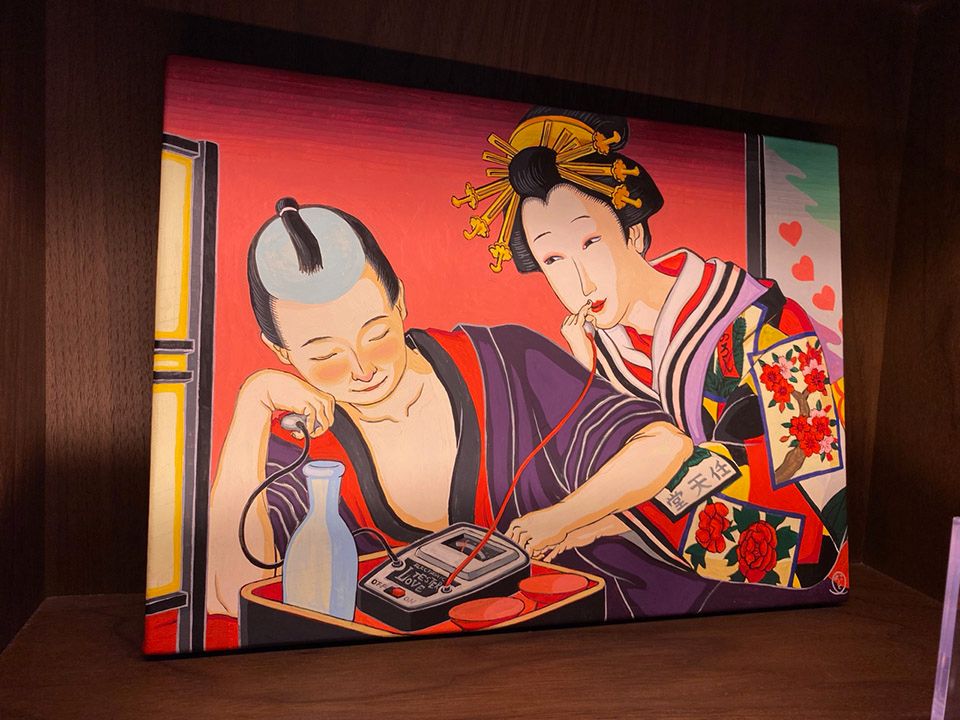
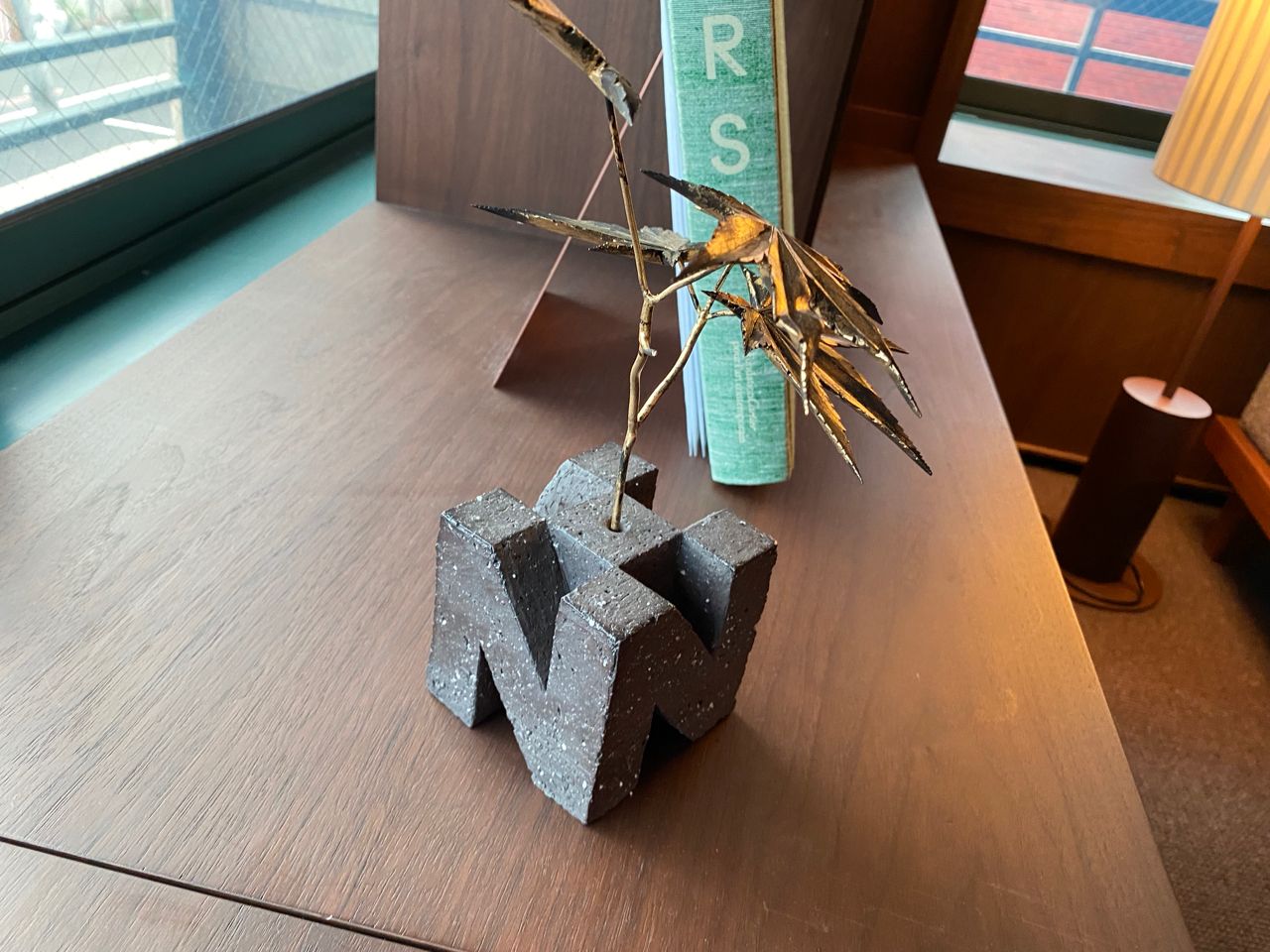

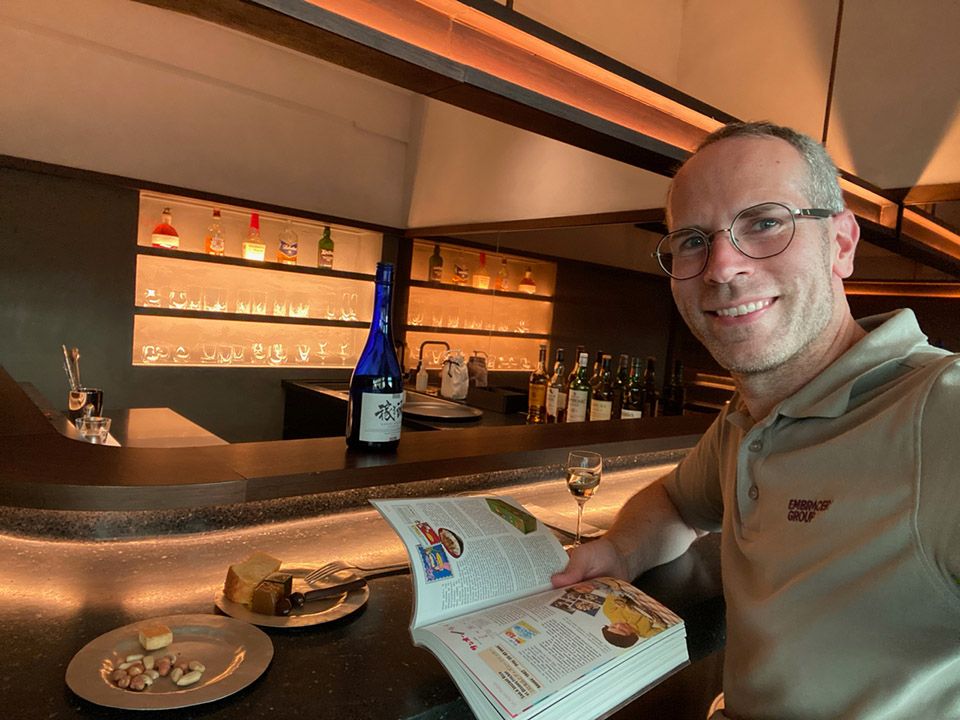
Source: Author.
I visited the library again after breakfast on my second day. This time, I explored the books that inspired Nintendo. These were particularly fascinating and touched on a wide array of subjects including tesseracts, space, design, and pop culture. I intended to thoroughly explore each book, but I was soon completely mesmerised by the tomes on space and pop culture. The selection here is carefully curated and it is apparent that great thought went into which pieces to feature.



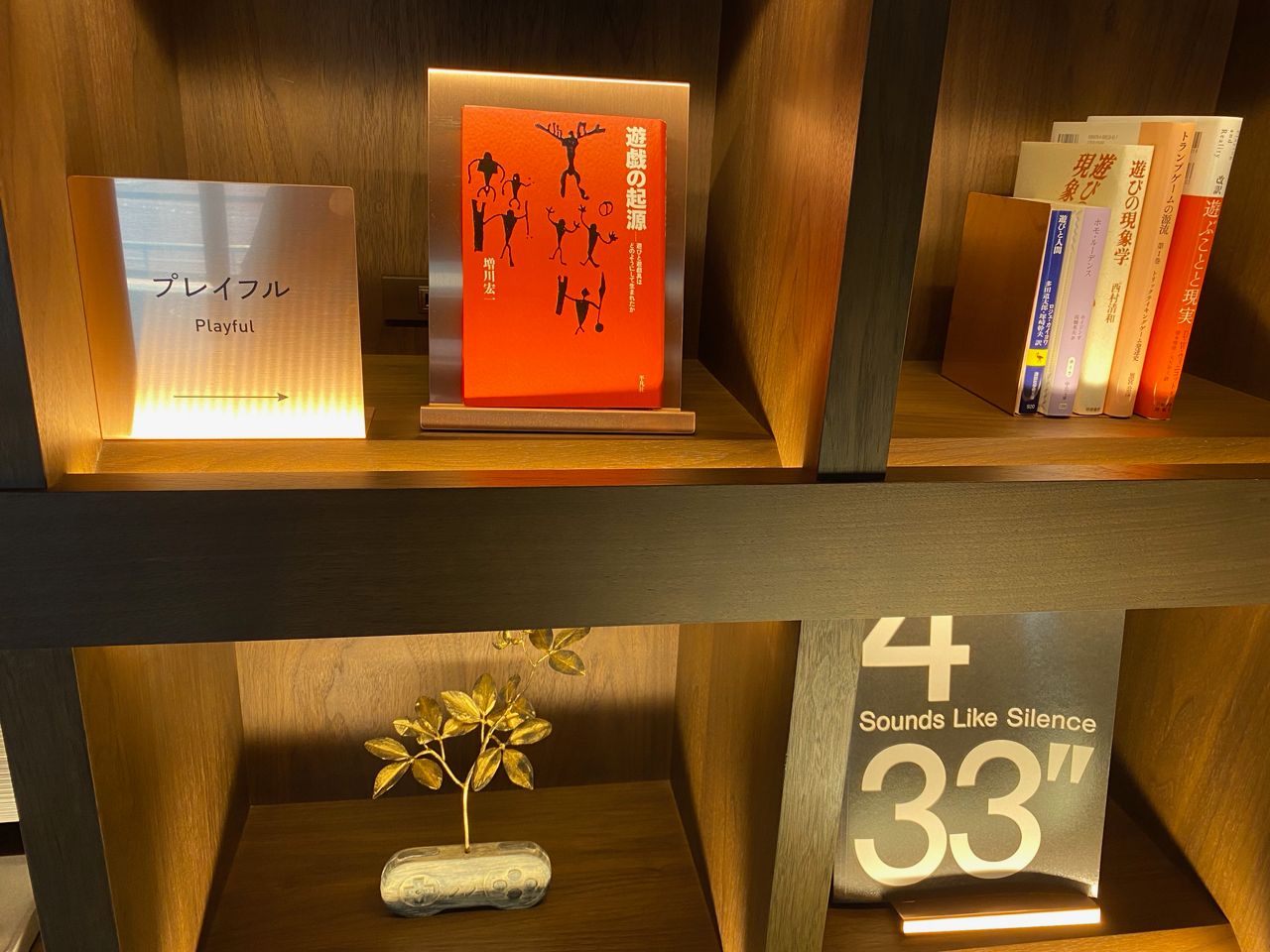

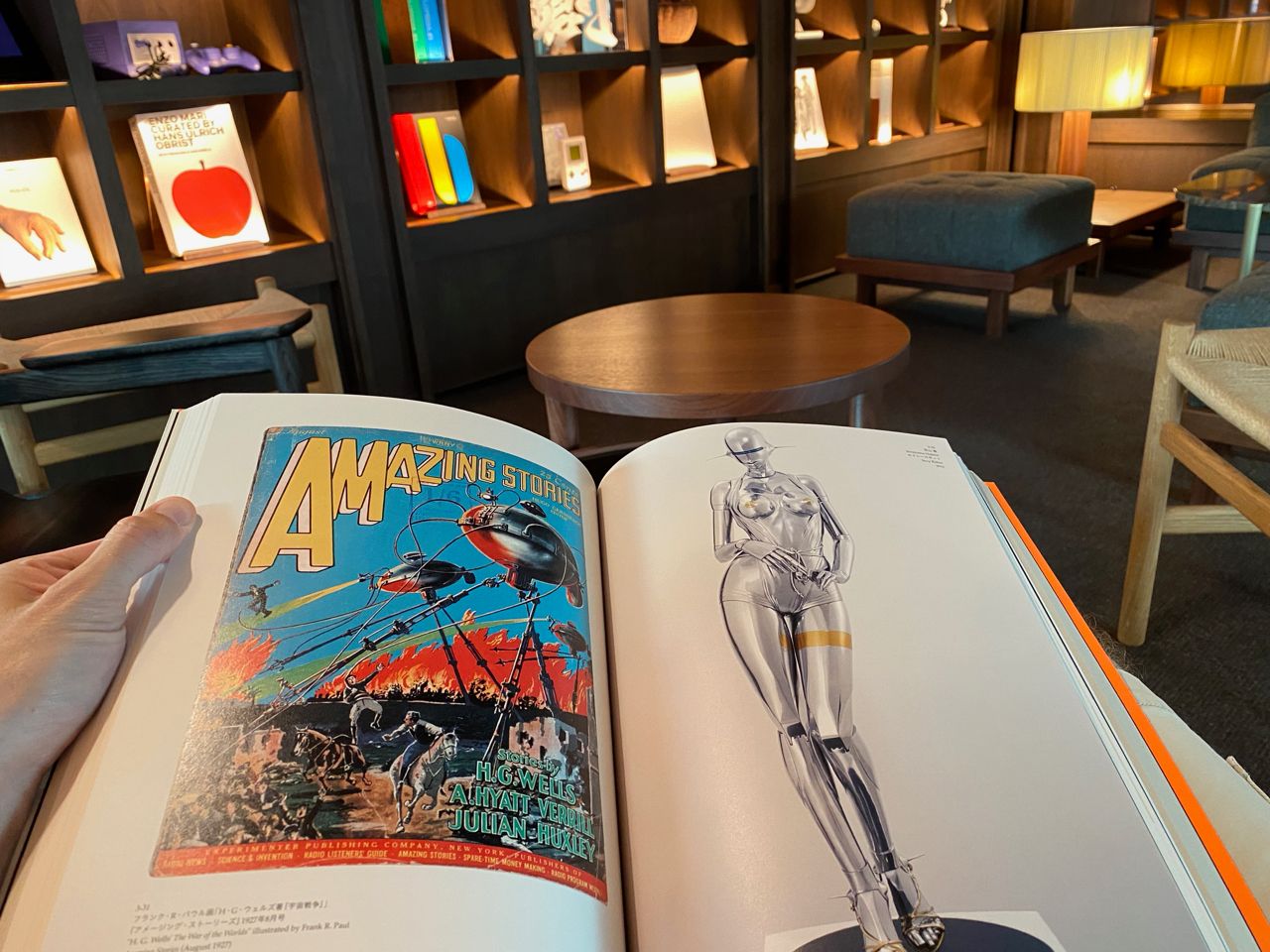
Source: Author.
Marufukuro is a boutique hotel, which means it's more expensive than your typical hotel stay. But it's worth noting that breakfast, lunch, dinner, snacks and drinks are all included in the pricing. The dinner and breakfast are served in a small restaurant with its own entrance on the side of the building furthest away from the club building. The interior of the restaurant is sleek, light, and clean, and almost reminds me of the modern Nintendo offices. There are multiple set courses to choose from for both breakfast and dinner. While the interior was ascetic, the food vividly demonstrated culinary finesse, and tasted wonderful.
Besides the restaurant and whisky bar, the ground floor of the old office and adjacent new buildings contained two lobbies. The inner one served snacks and cookies, and if your early dinner wasn't quite enough, you could return later in the evening for a course of noodles and other goodies. I borrowed a set of modern hanafuda and flipped through the cards while enjoying a beer. Unlike most typical playing cards, hanafuda are small works of art unto themselves, and simply placing them in front of you on the table evokes a sense of satisfaction.


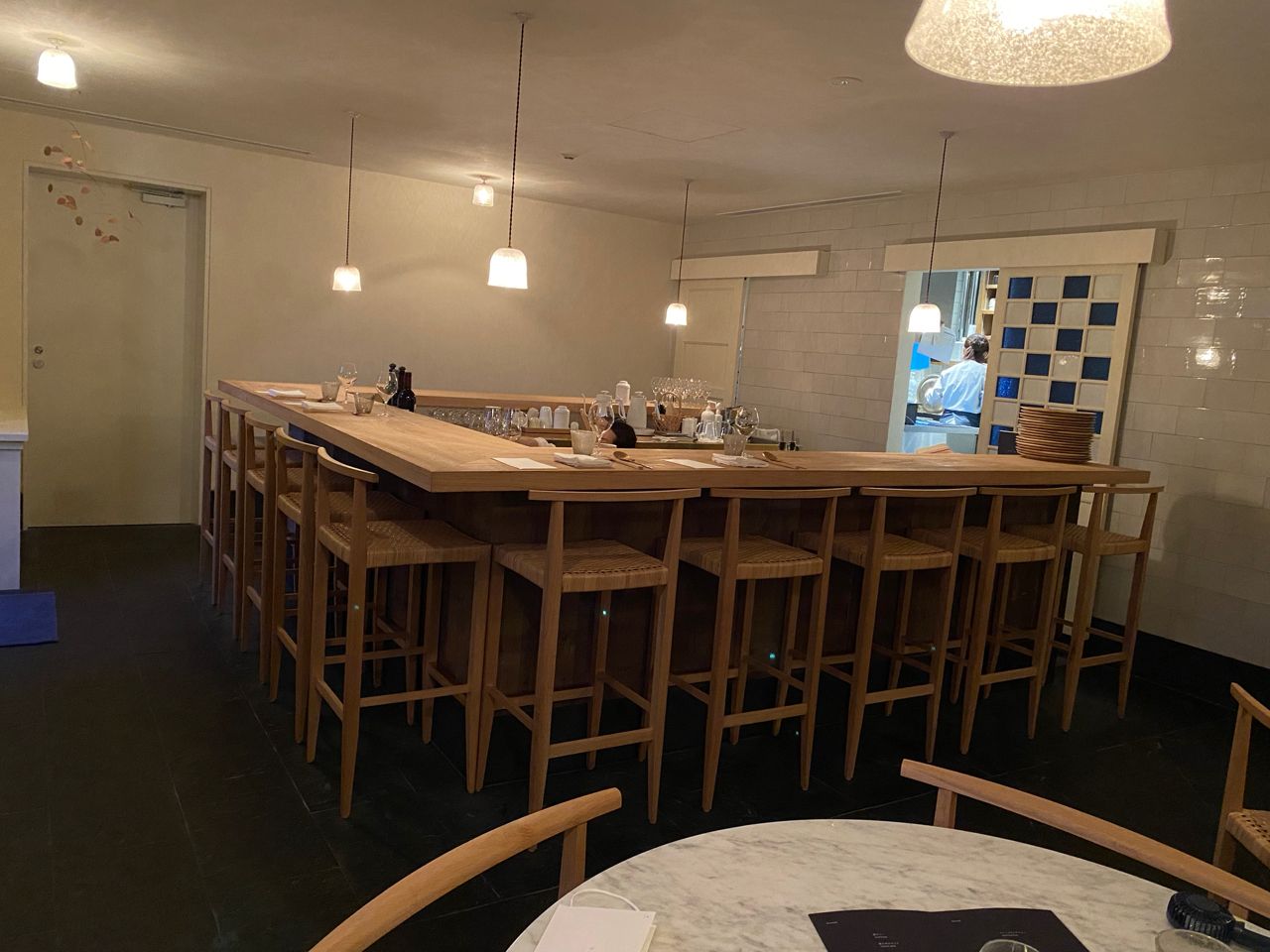


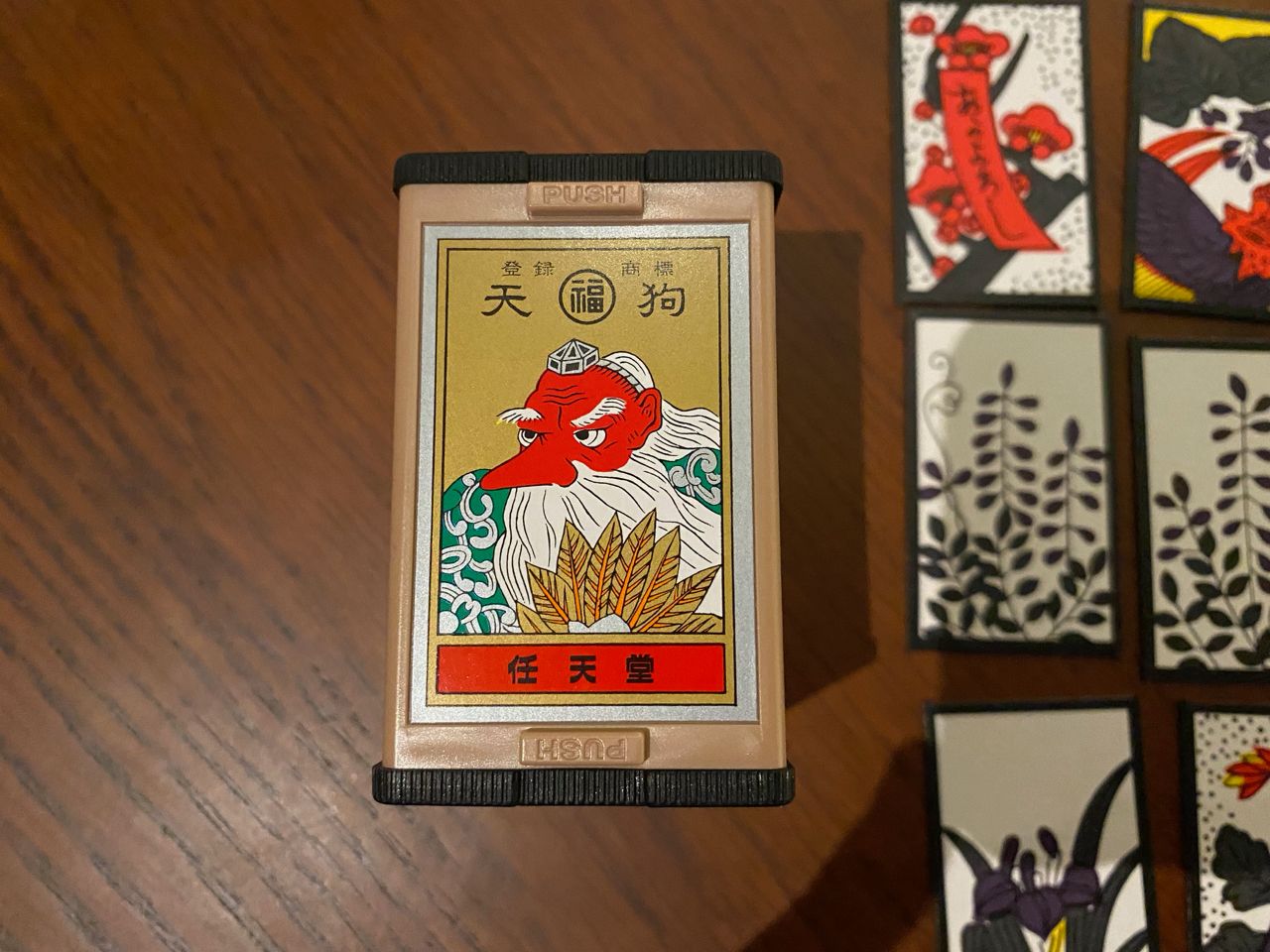
Source: Author.
Outside of the library, you won't find any references to Super Mario or video games at Marufukuro. However, if you have any interest in the history of Nintendo and you want to understand and experience the company's origins, then a visit to Marufukuro is both profound and magical. This is where the Yamauchi family lived and worked; a nearly-century old building within which a humble hanafuda manufacturer blossomed into the company that entertains many millions today. This is a truly special place where history was made.
Even if you aren't especially interested in Nintendo history, Marufukuro is still a gorgeous place to stay when visiting Kyoto. It is a quiet, elegant refuge in the heart of Japan's bustling cultural capital.